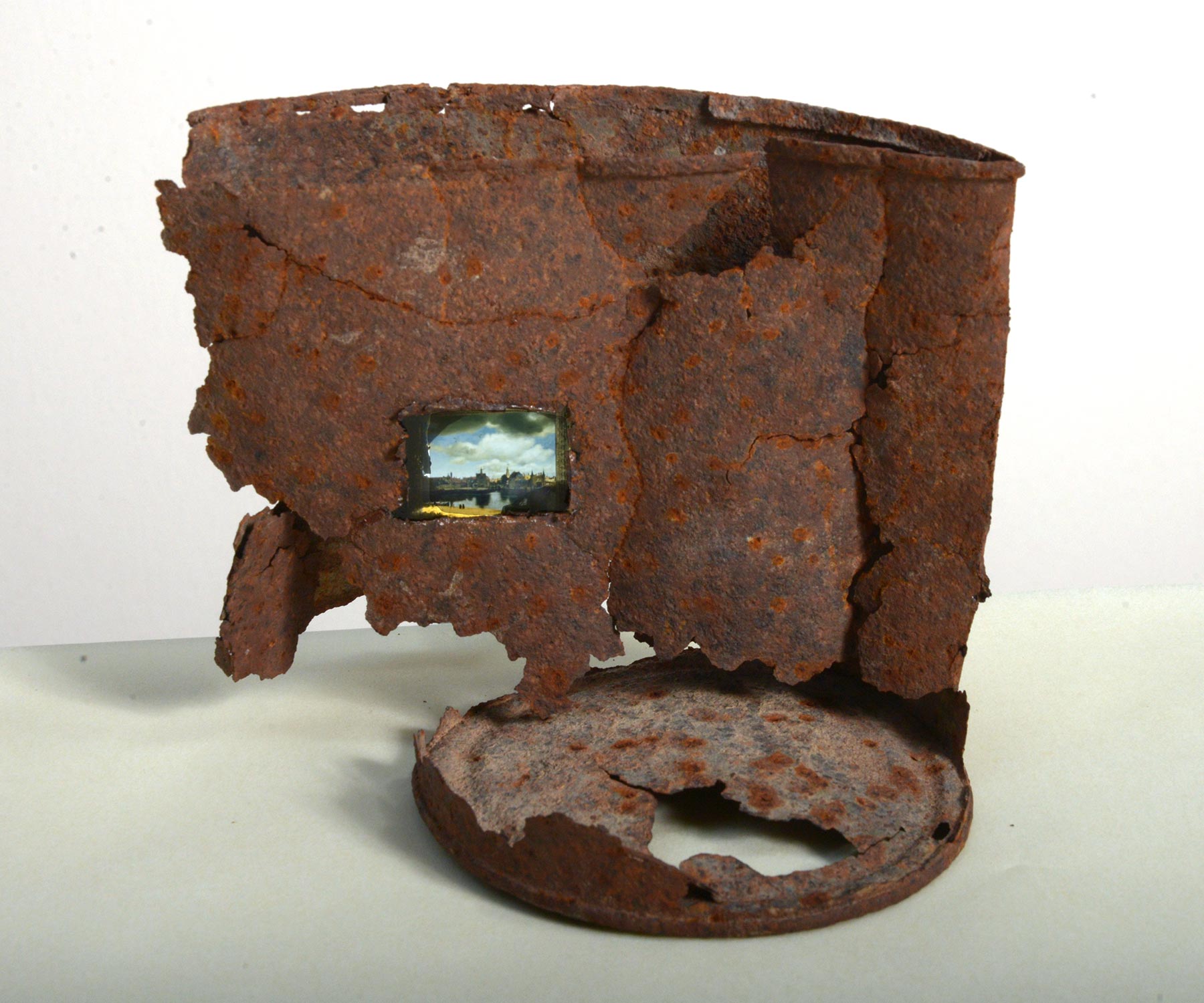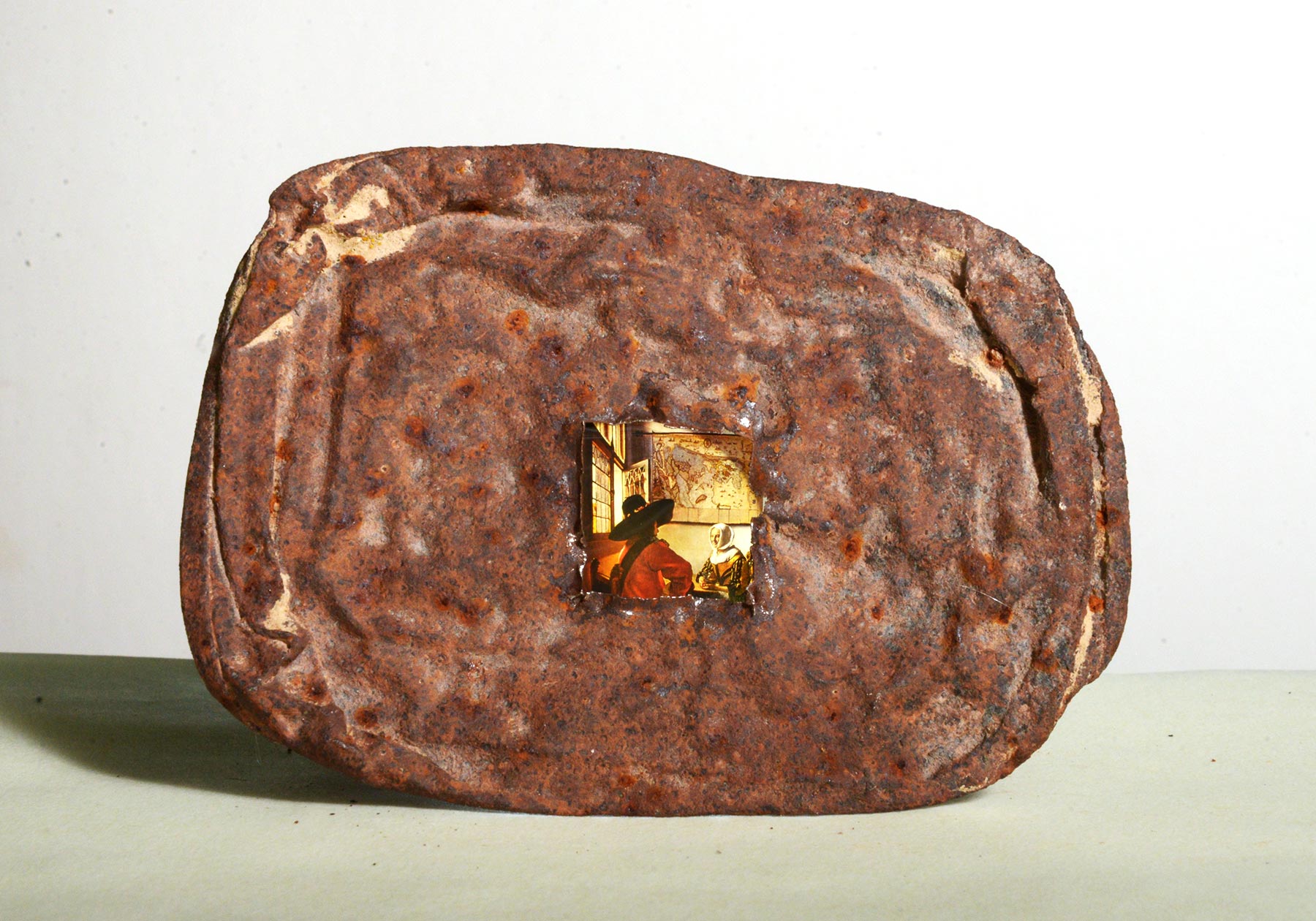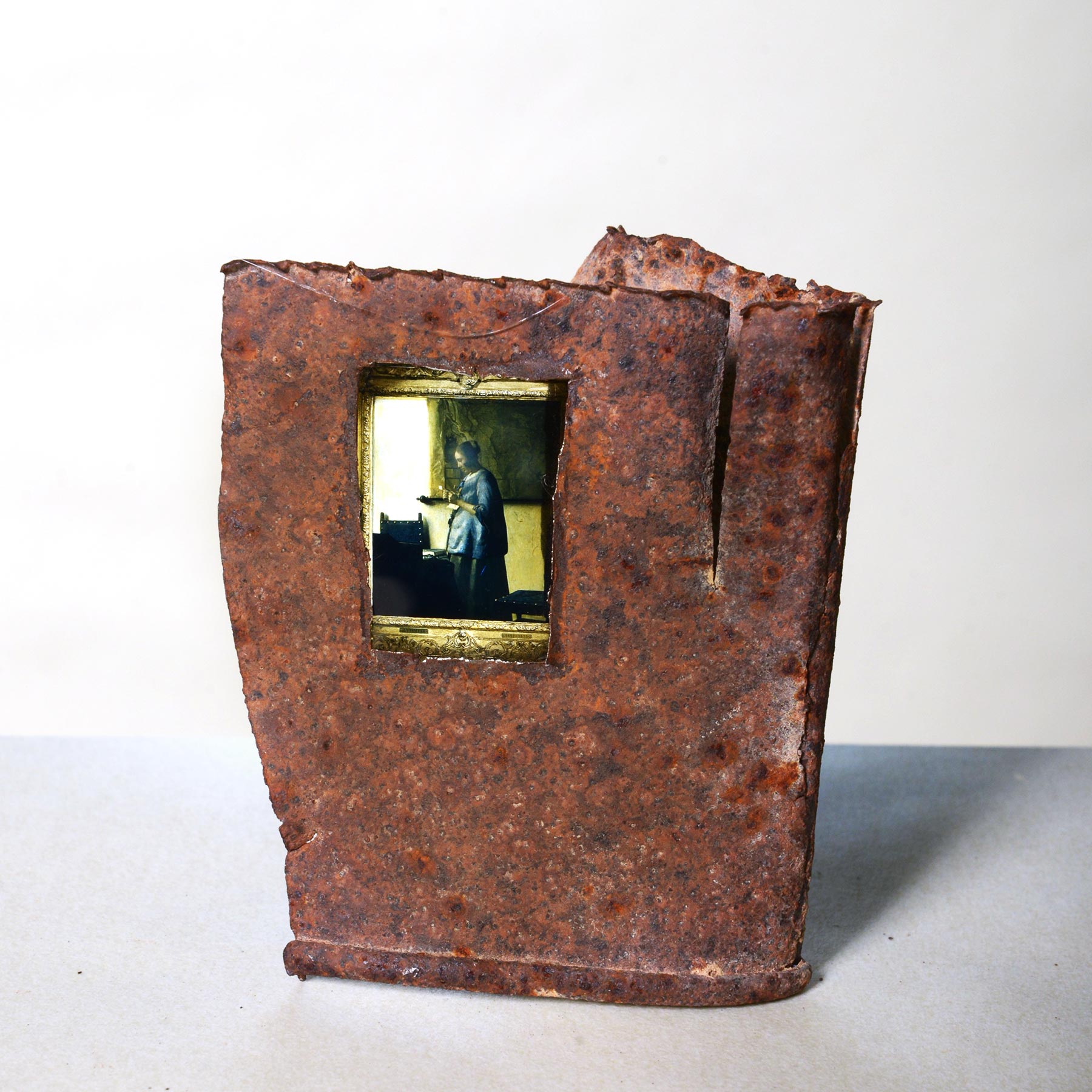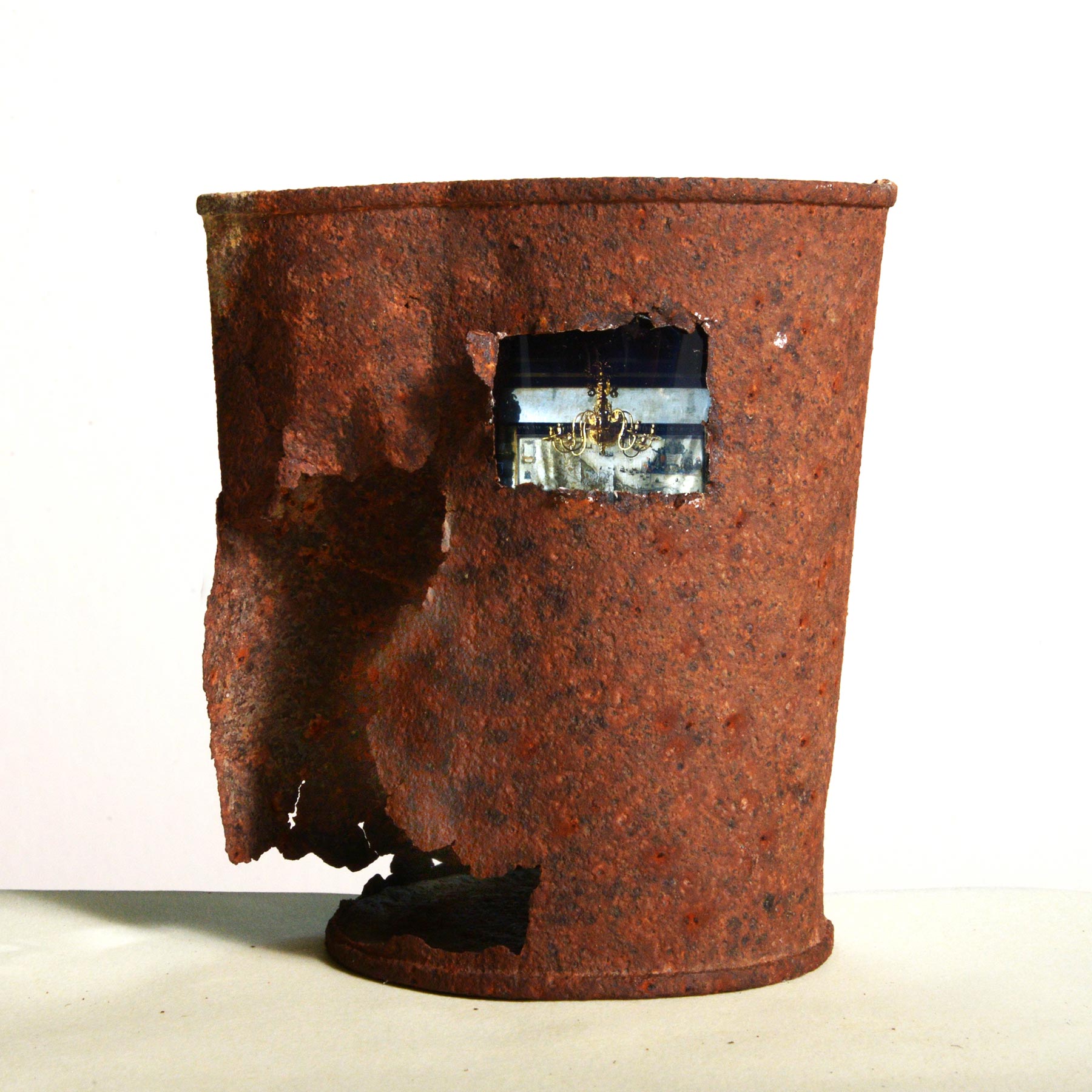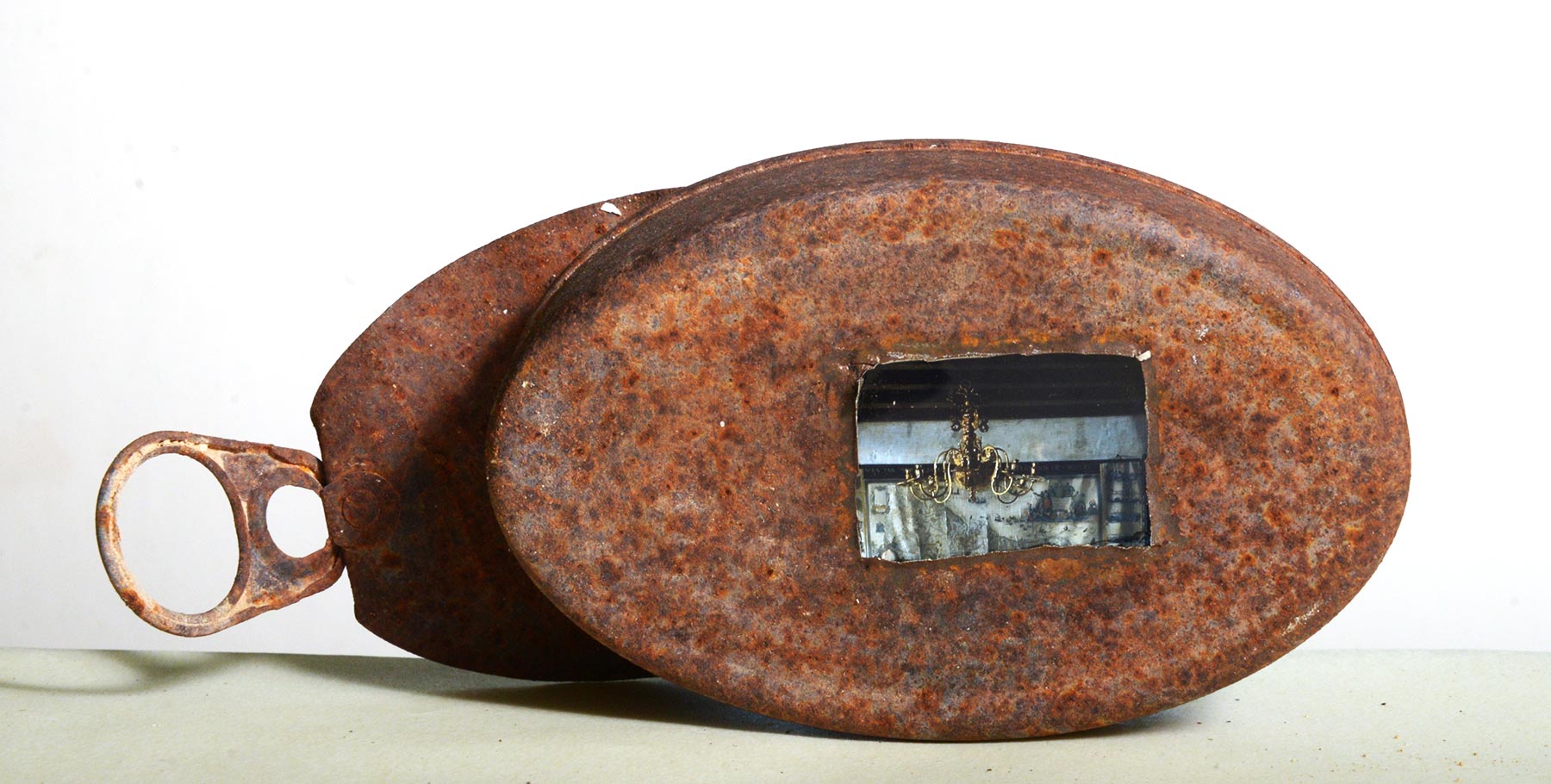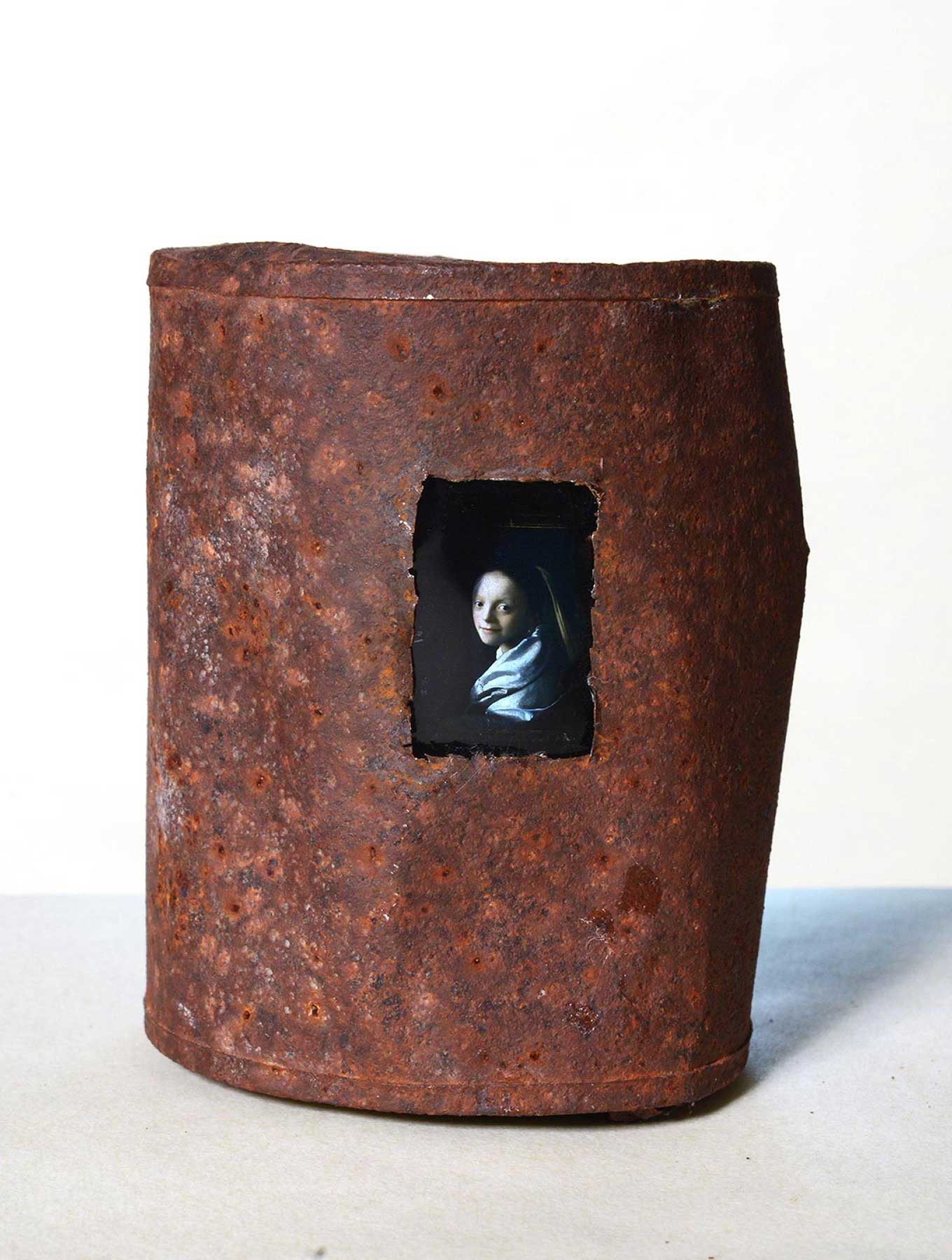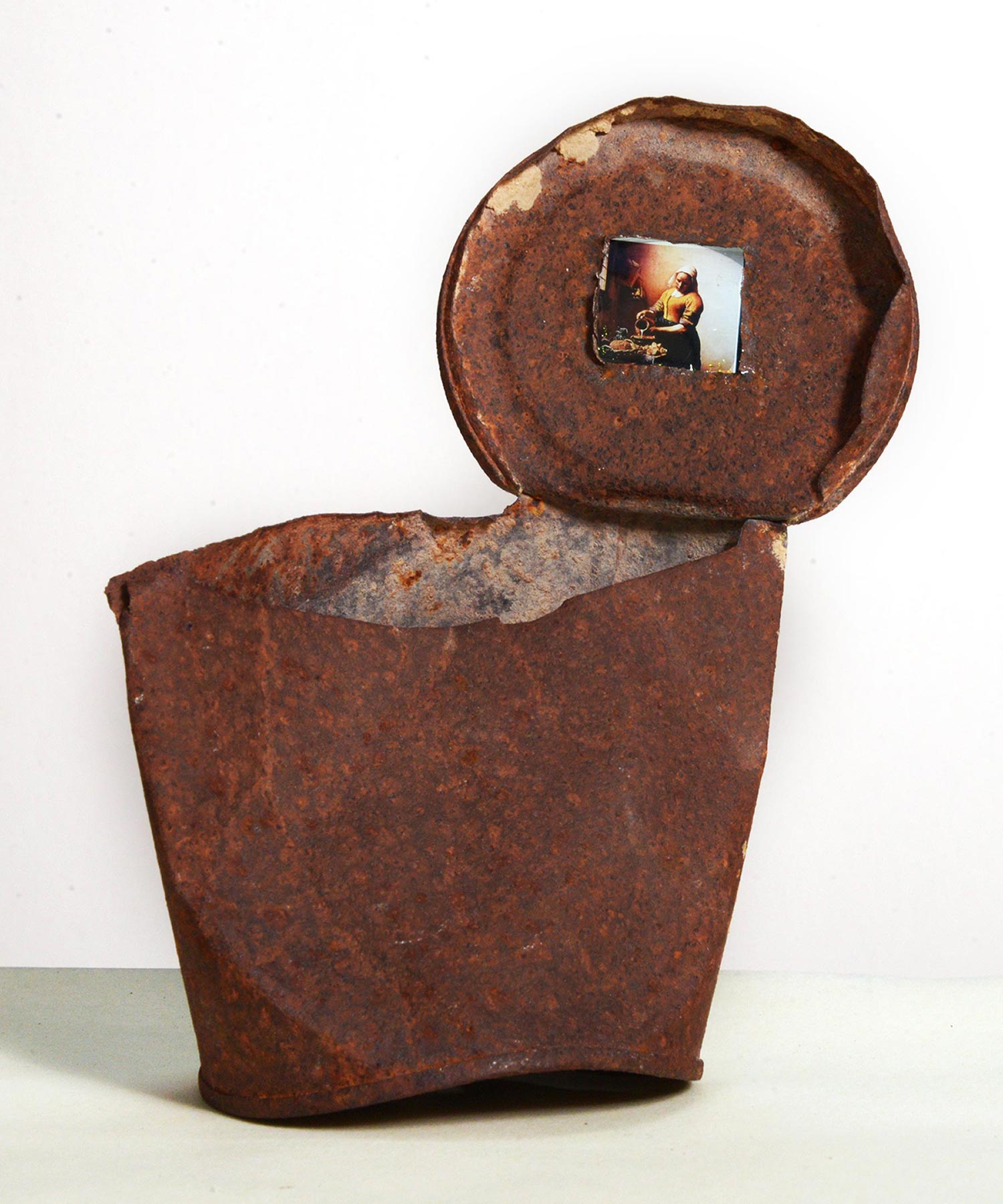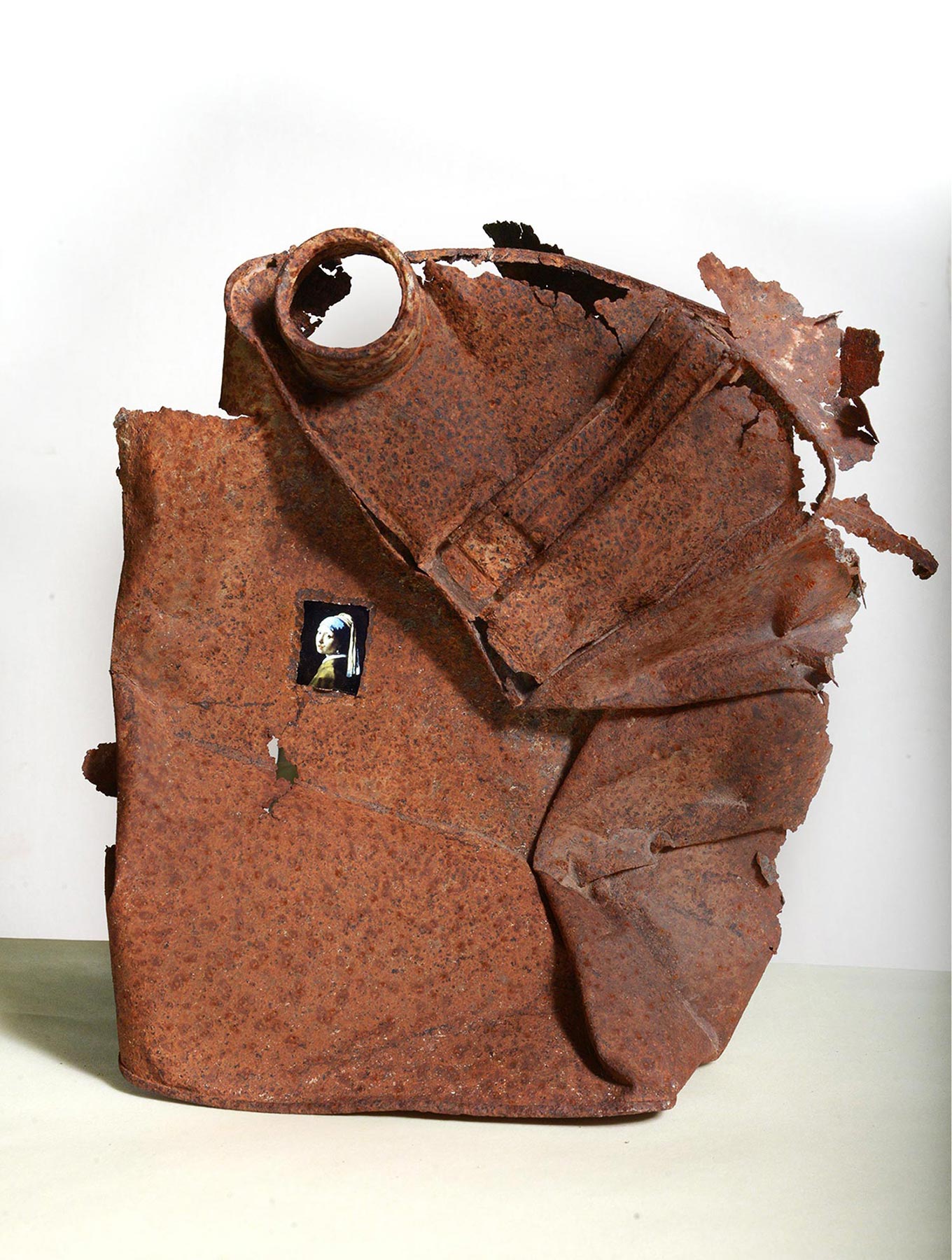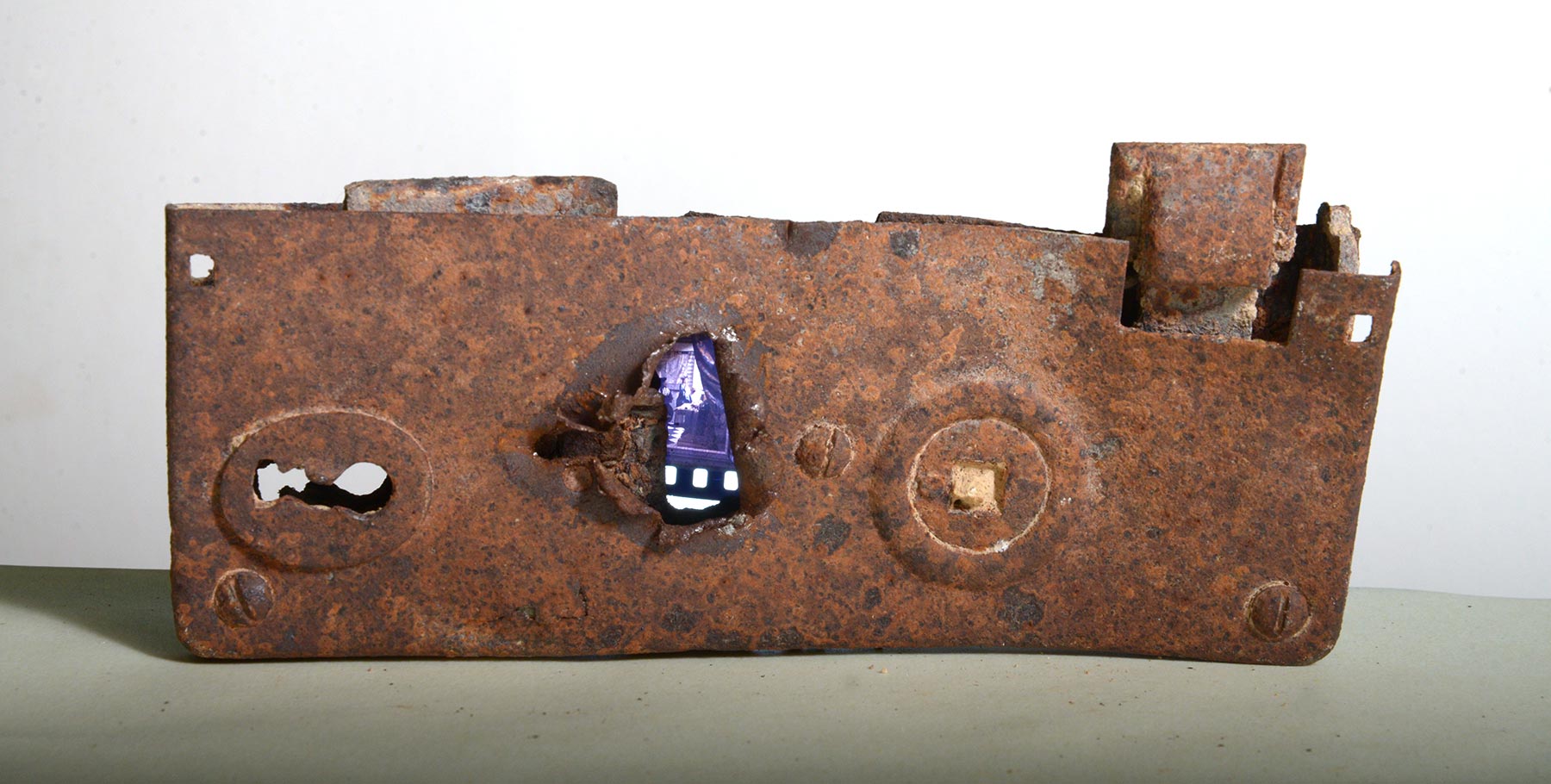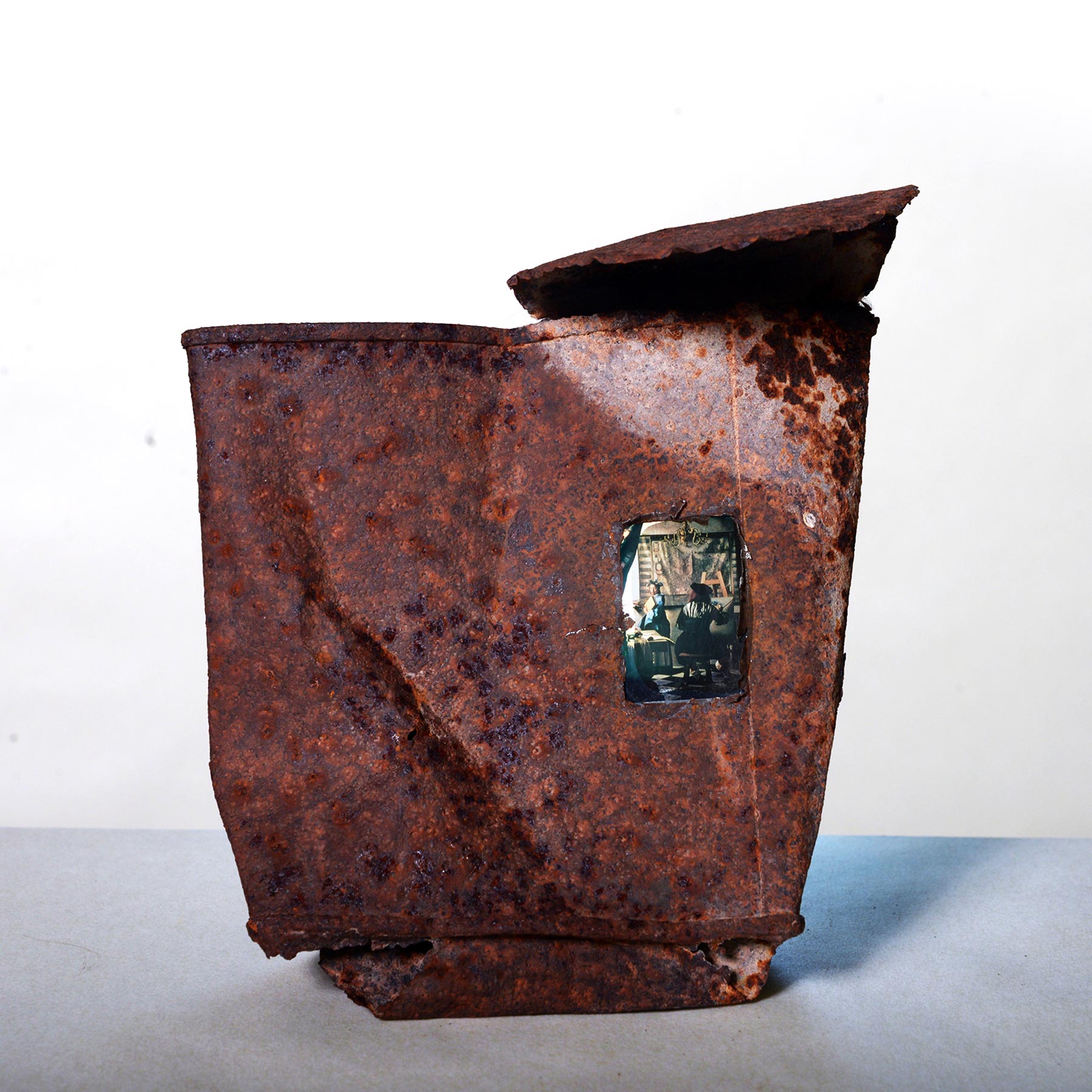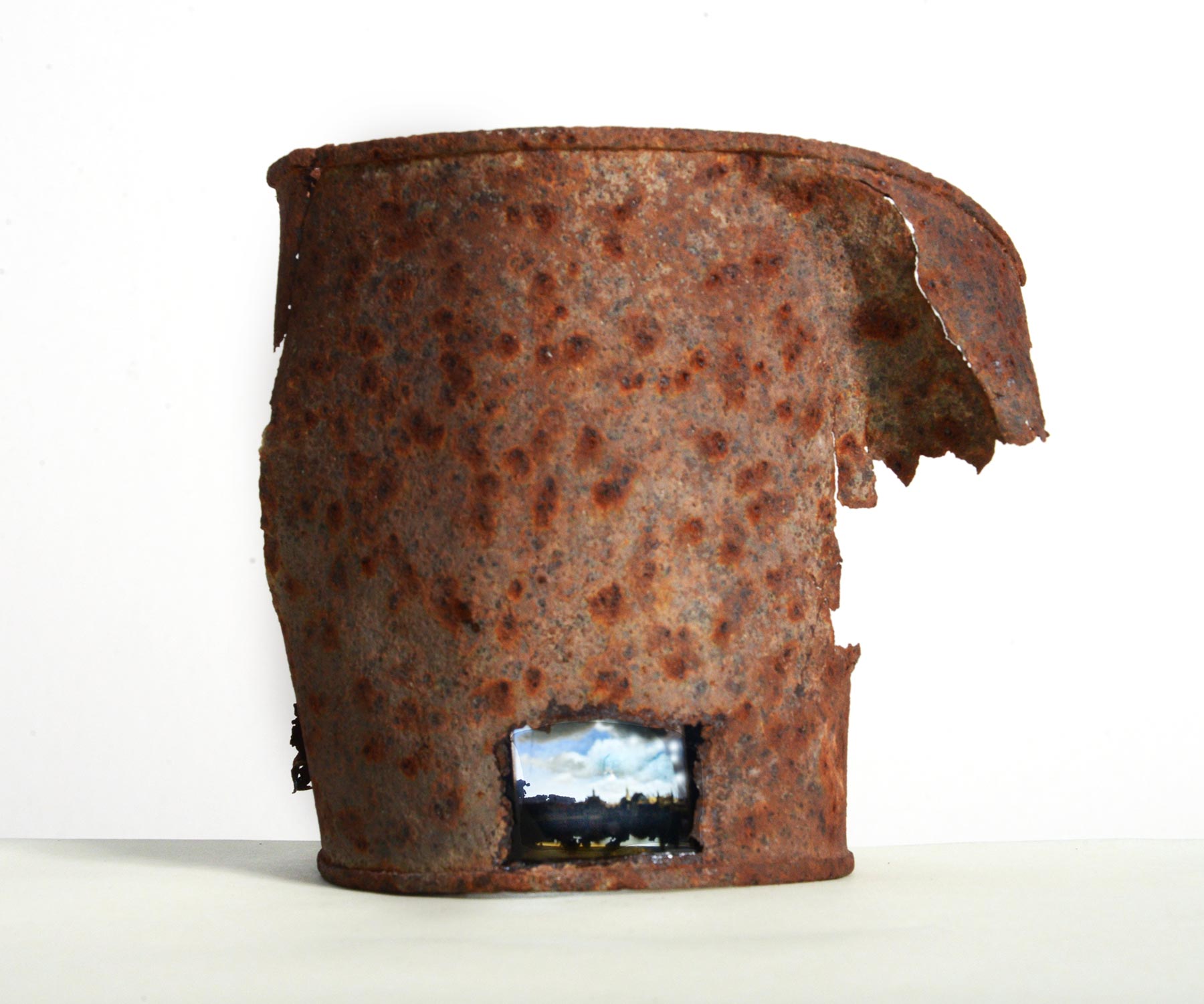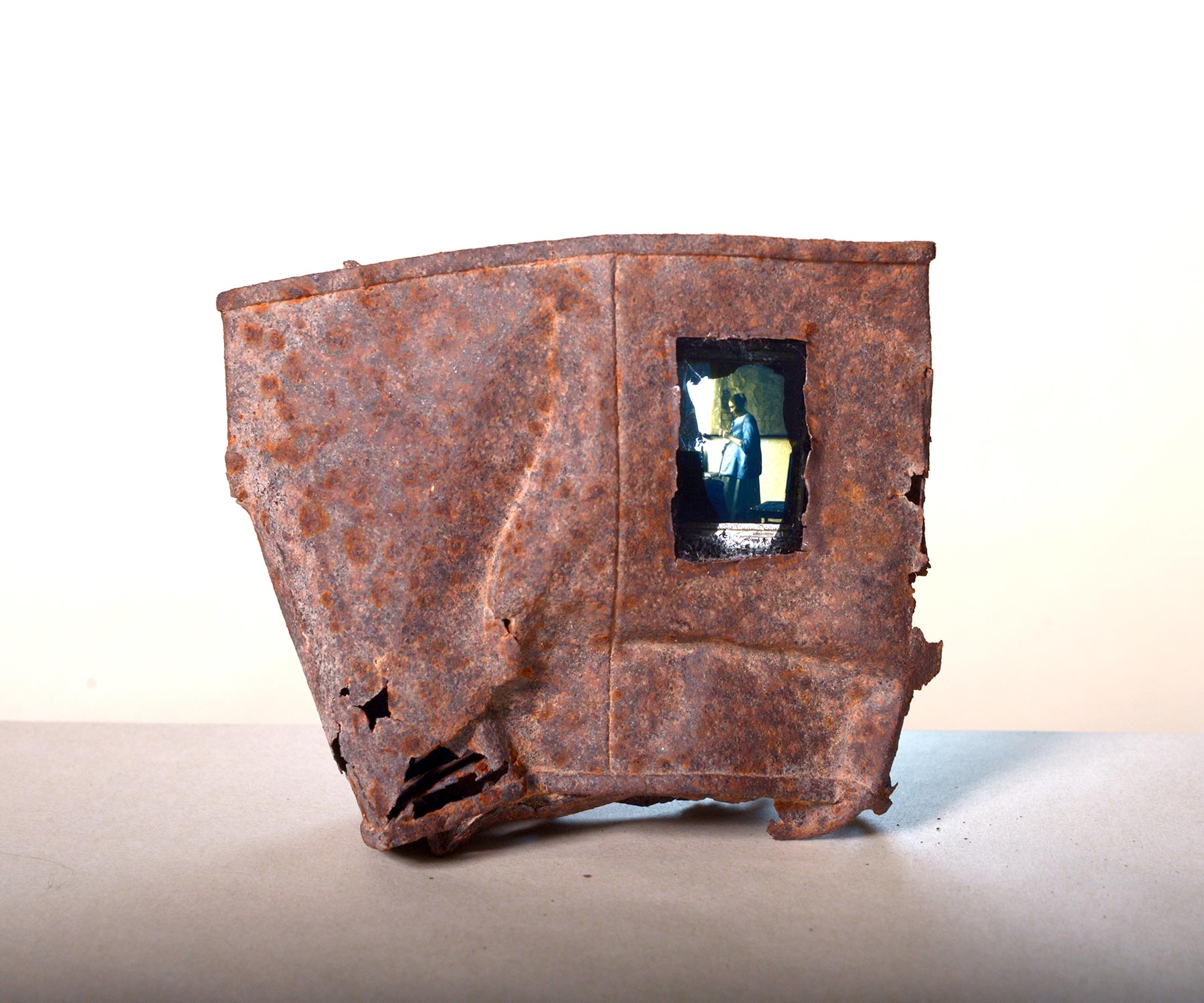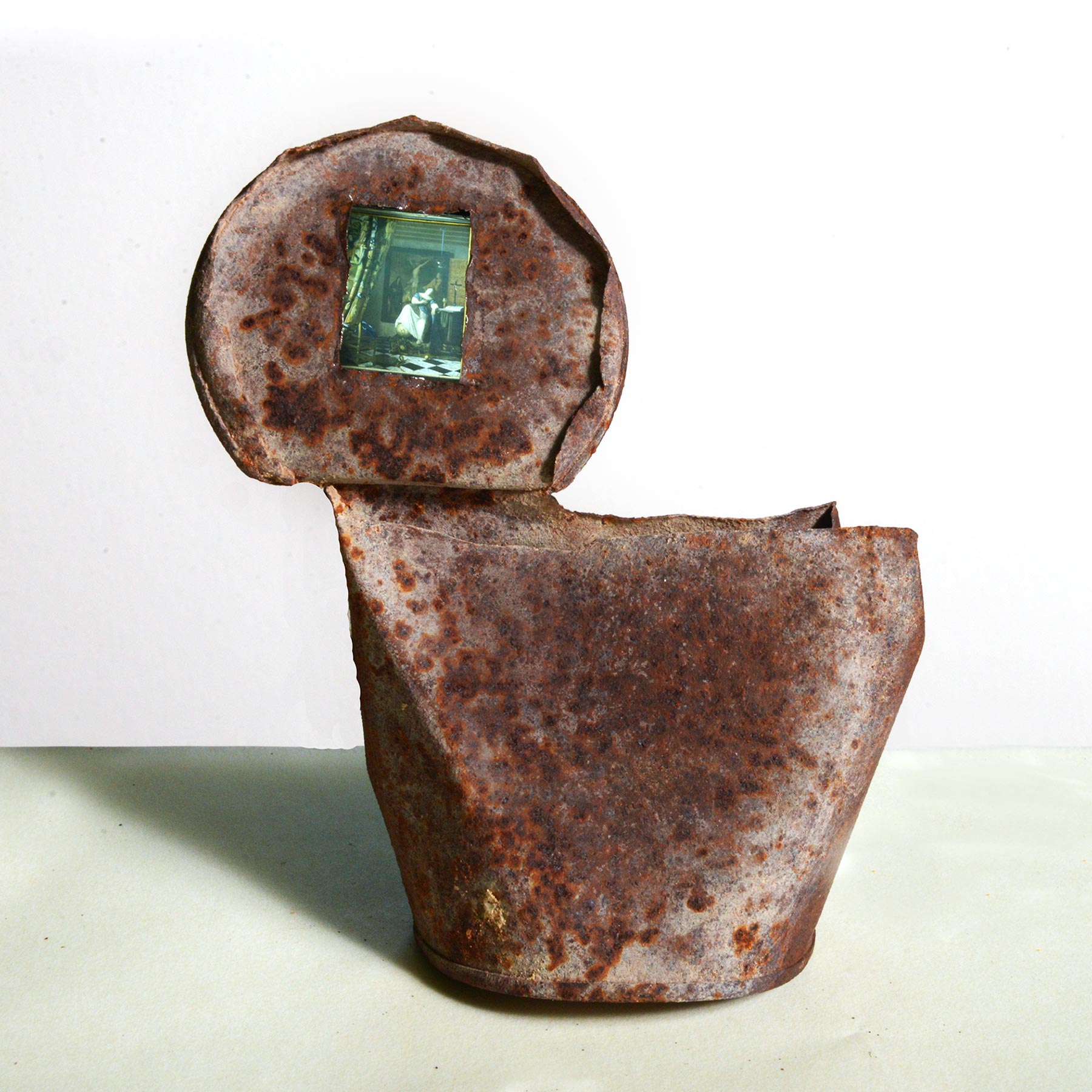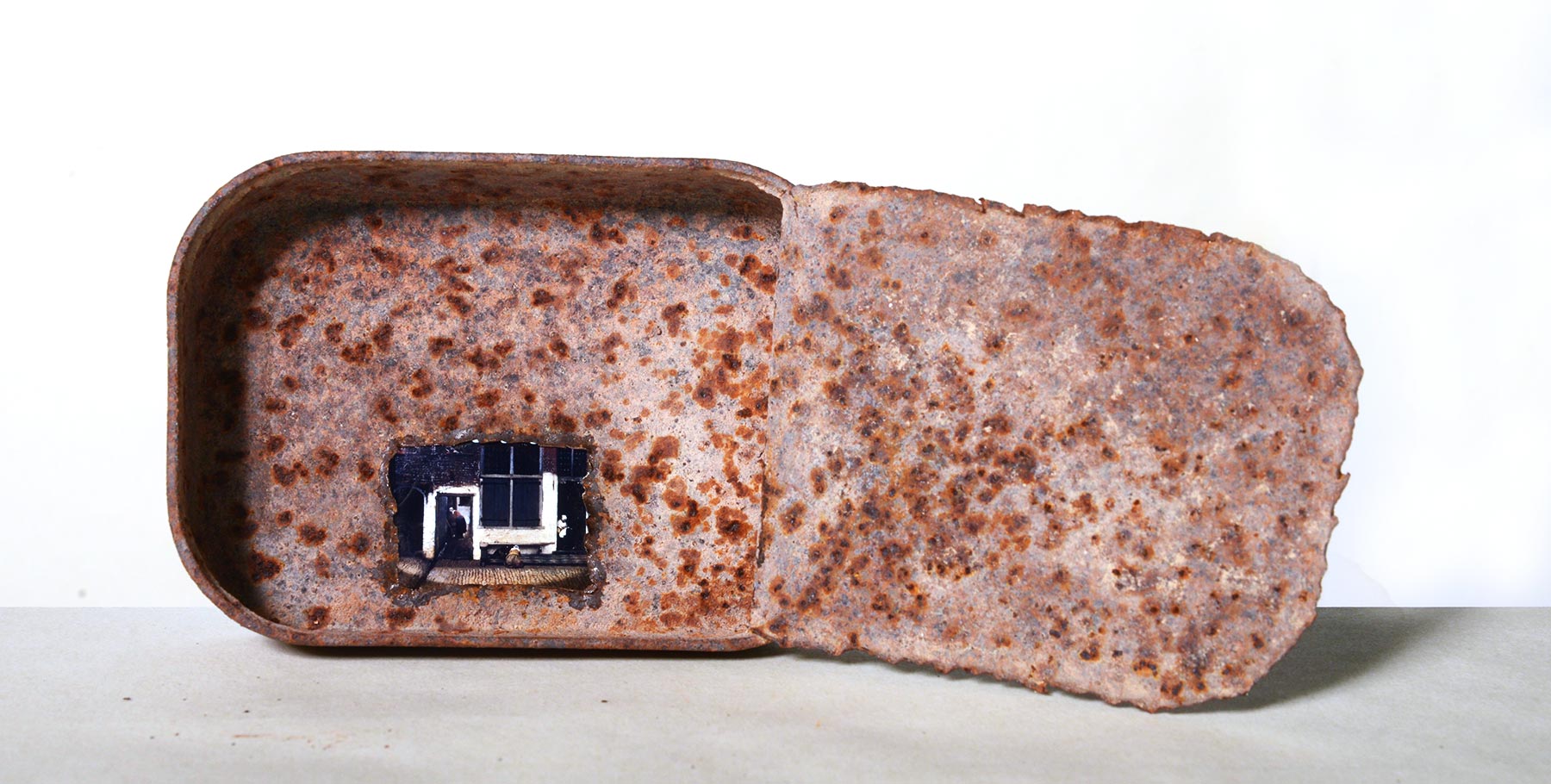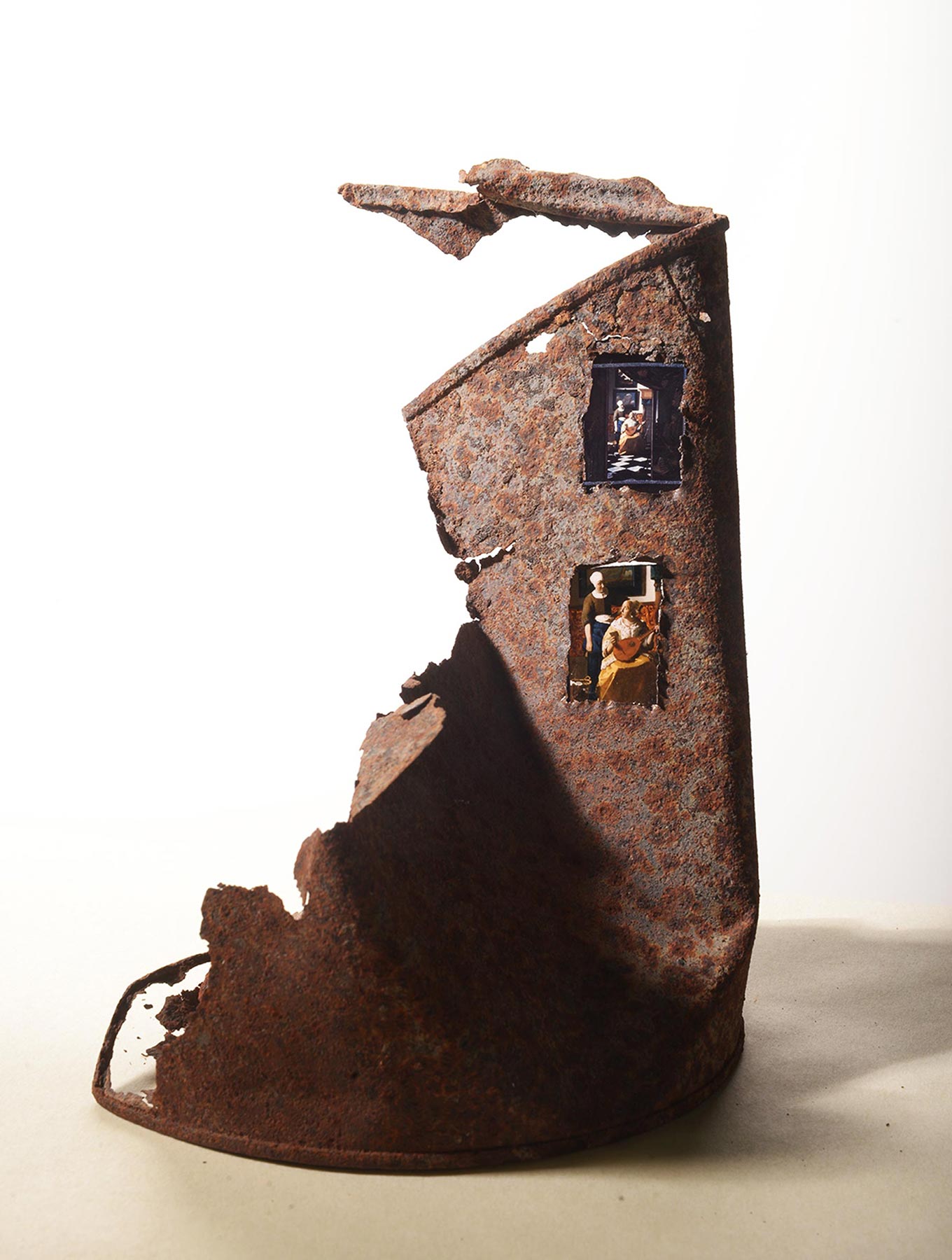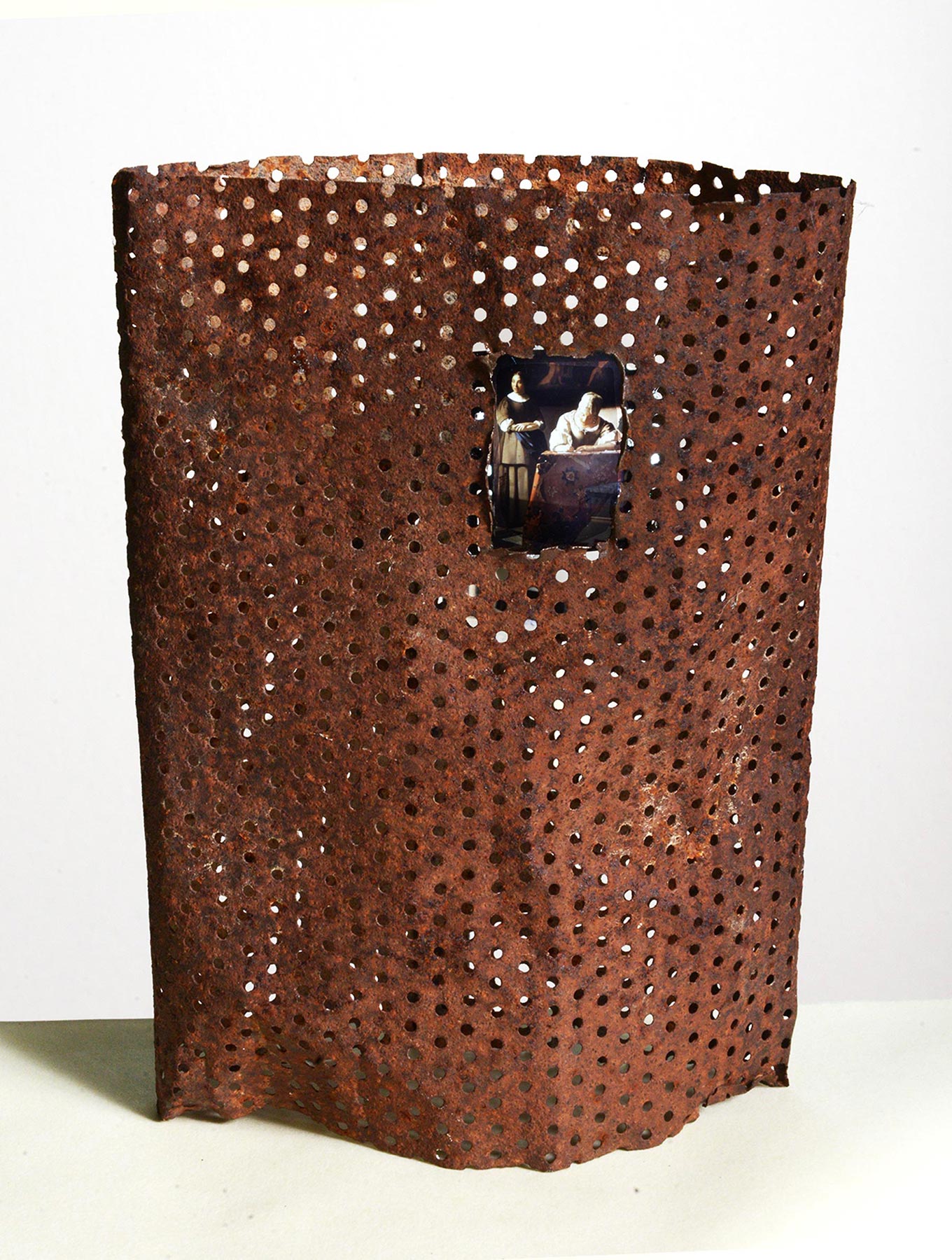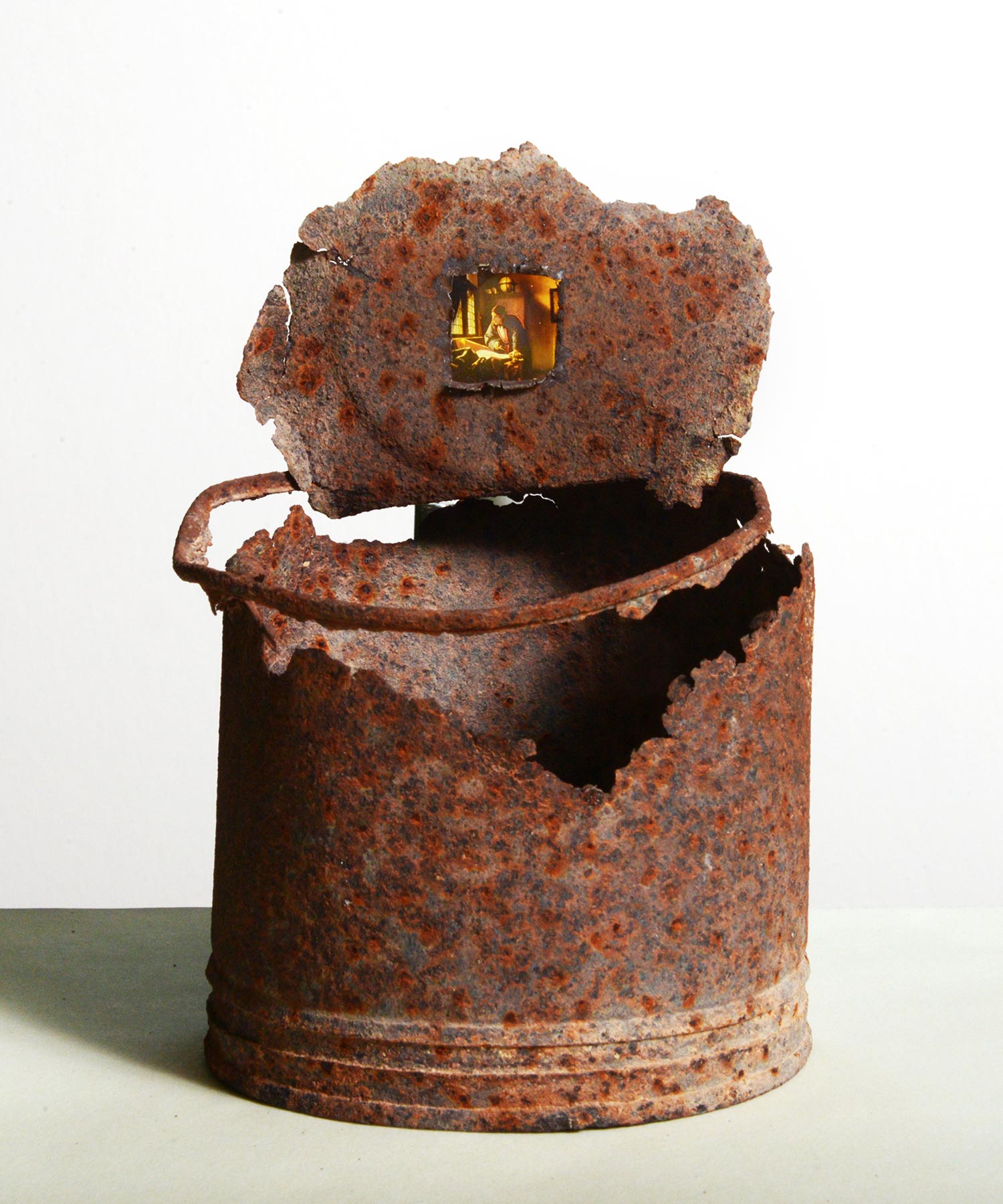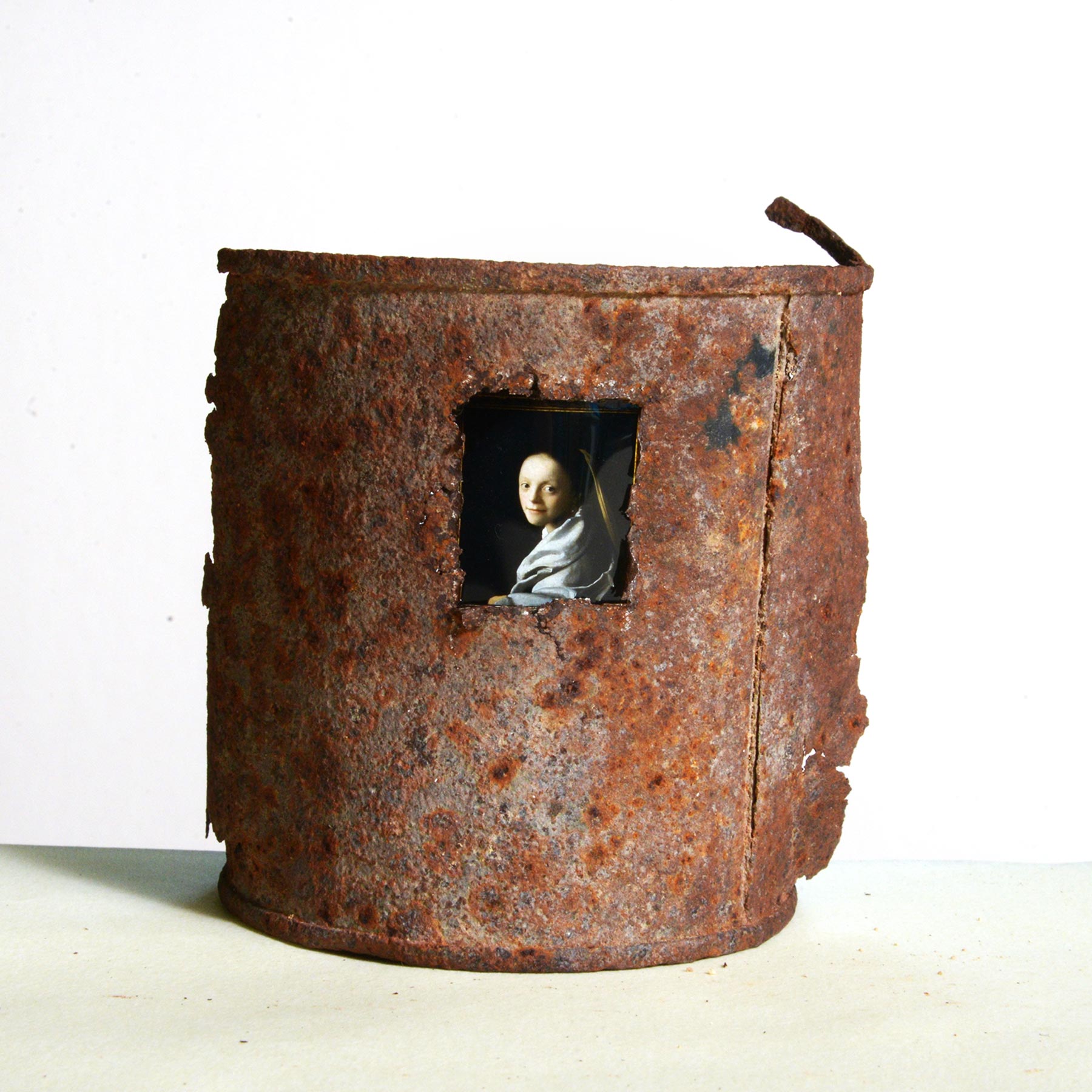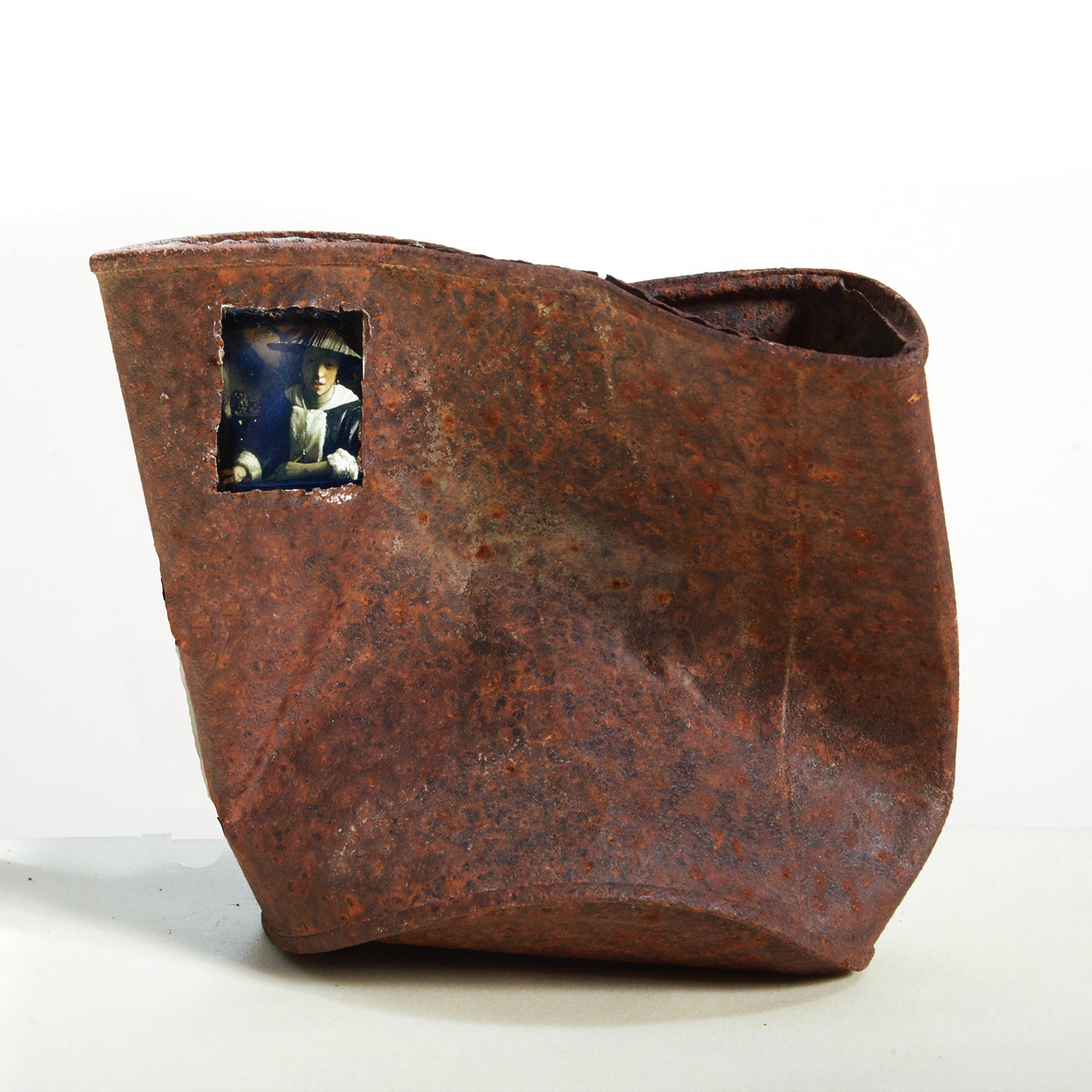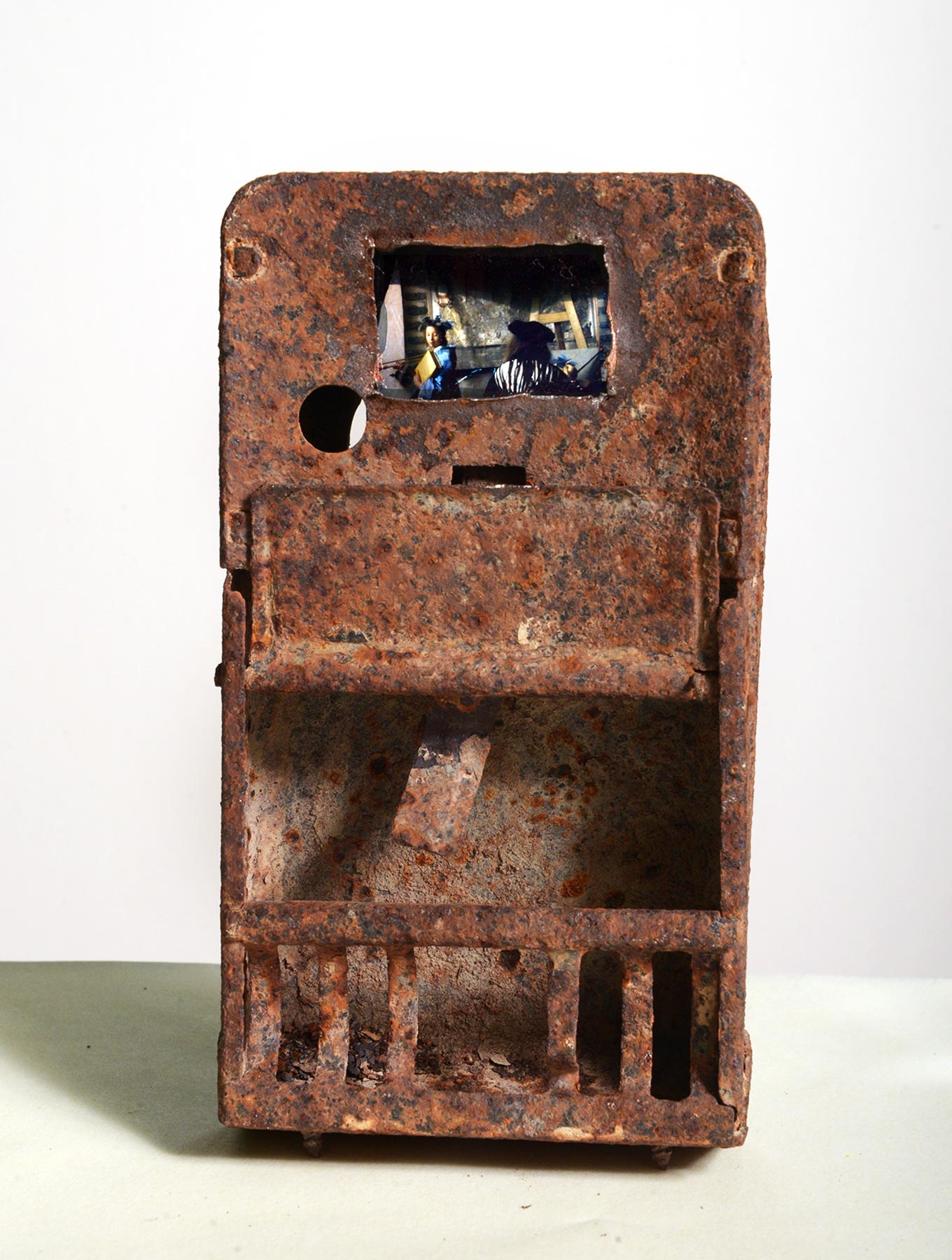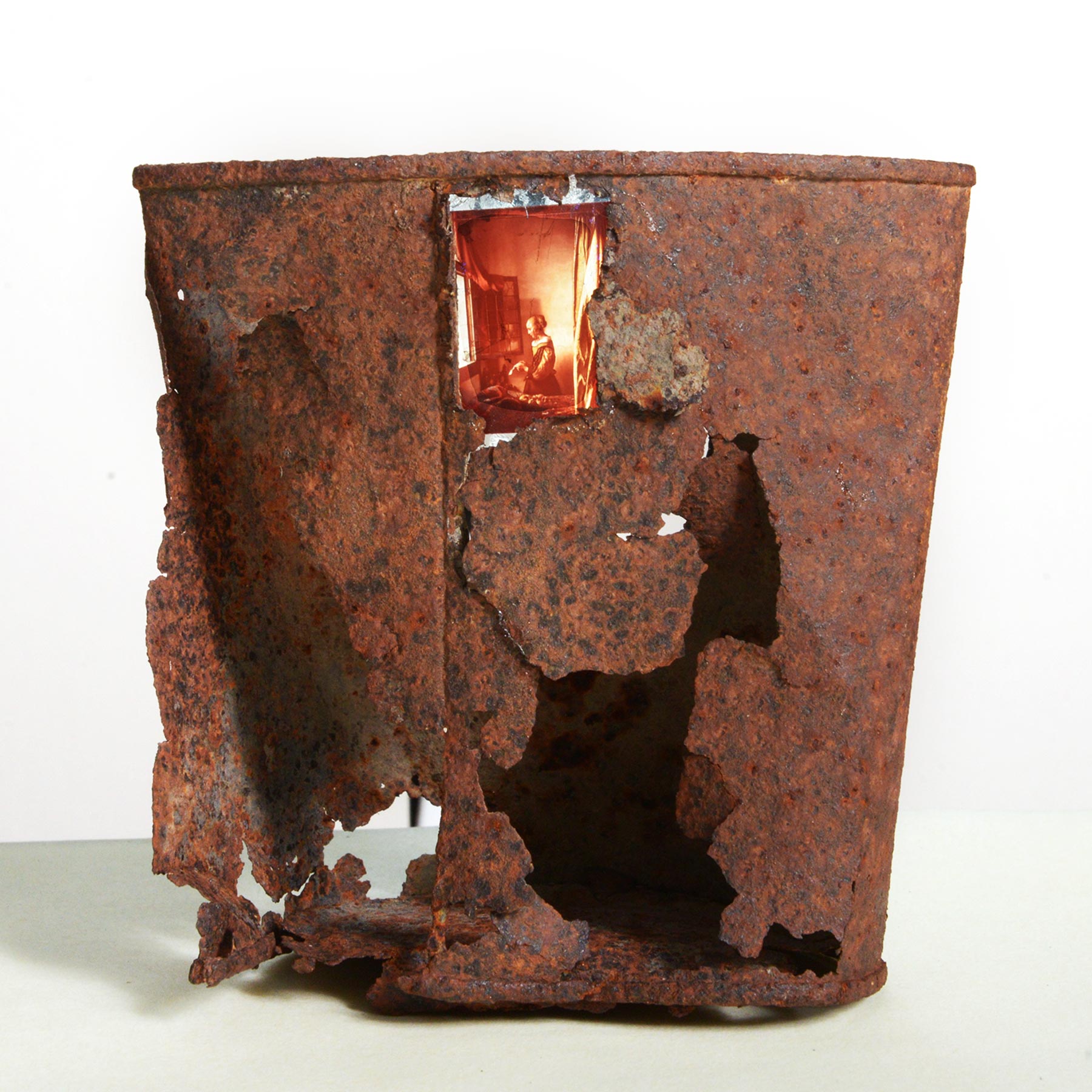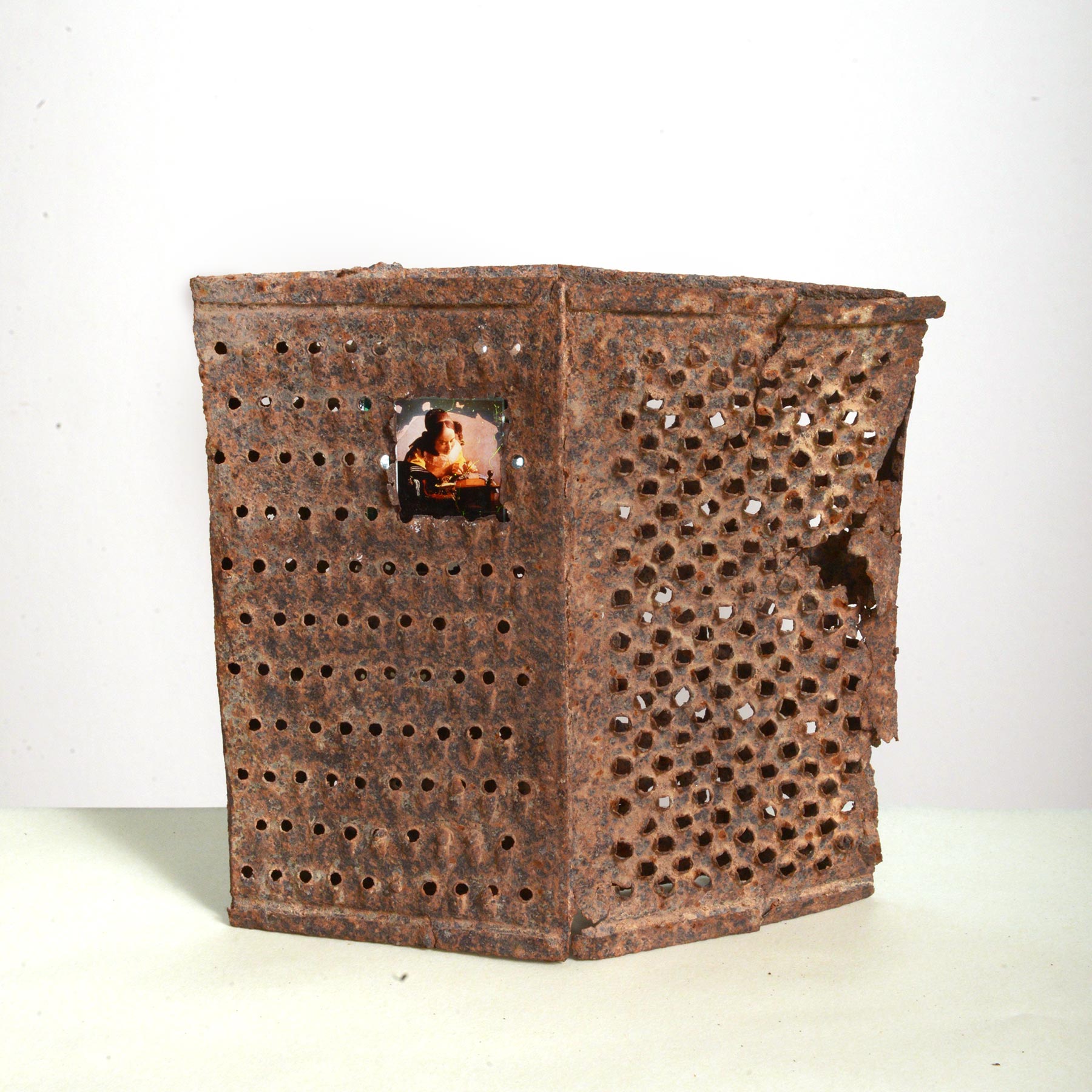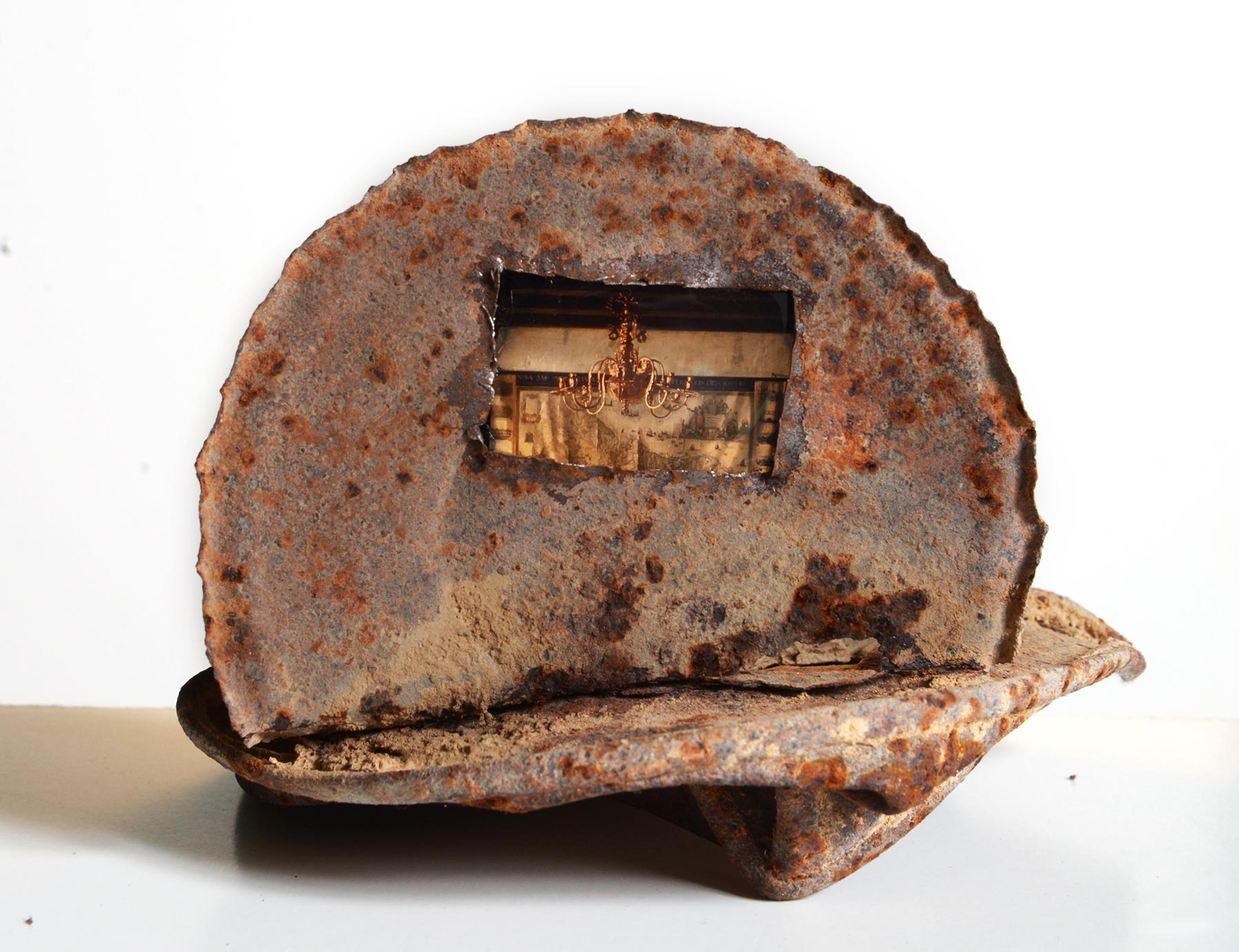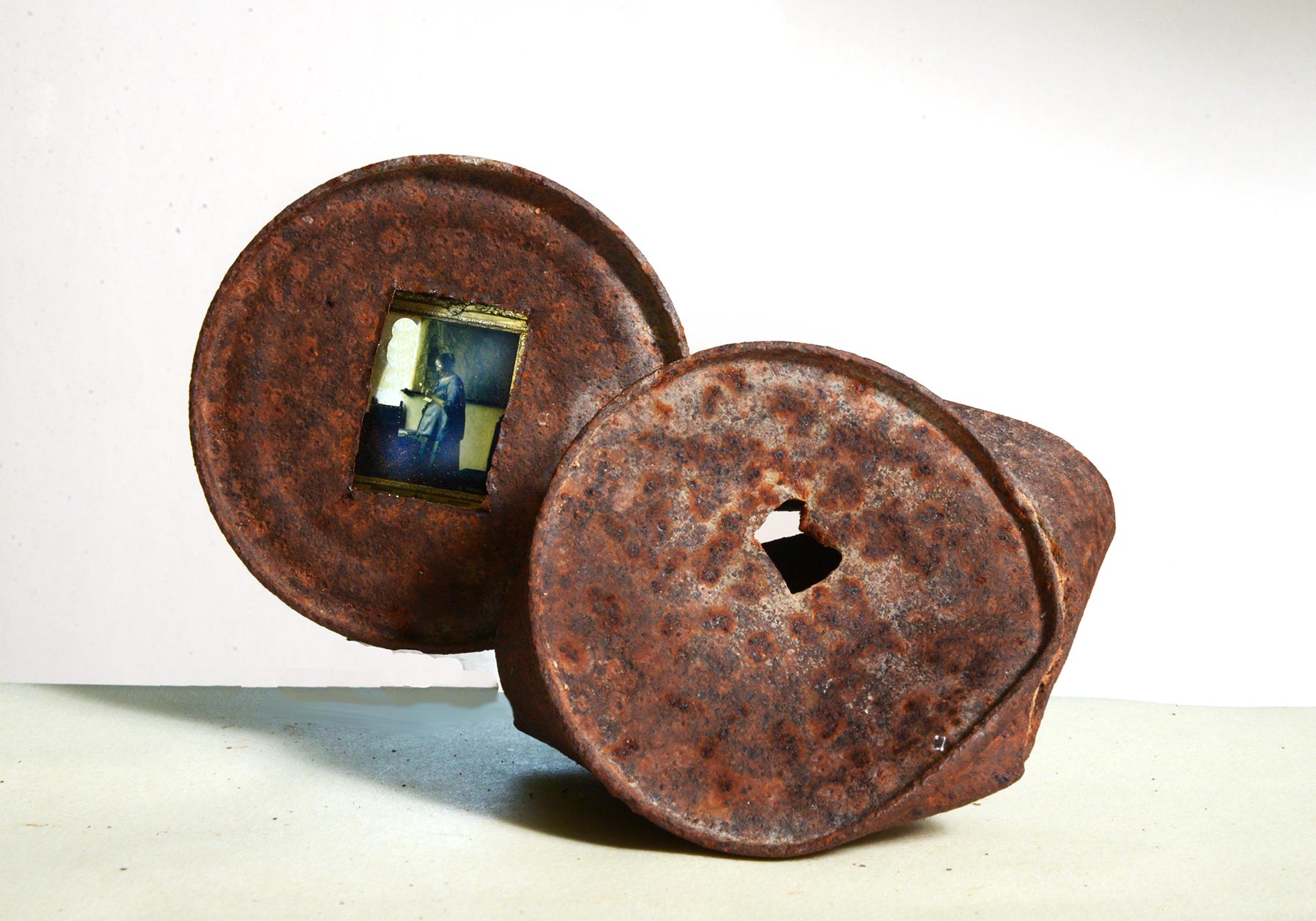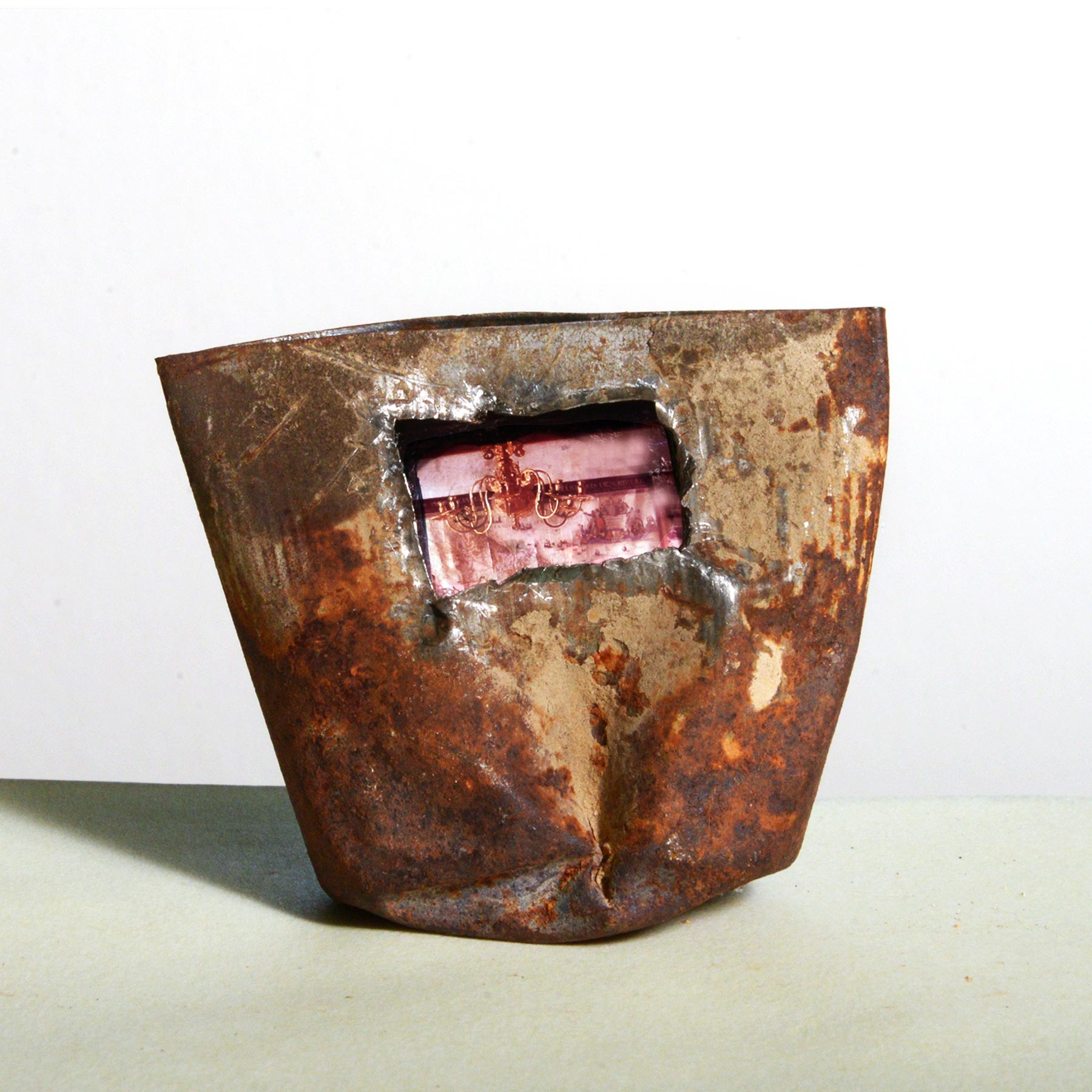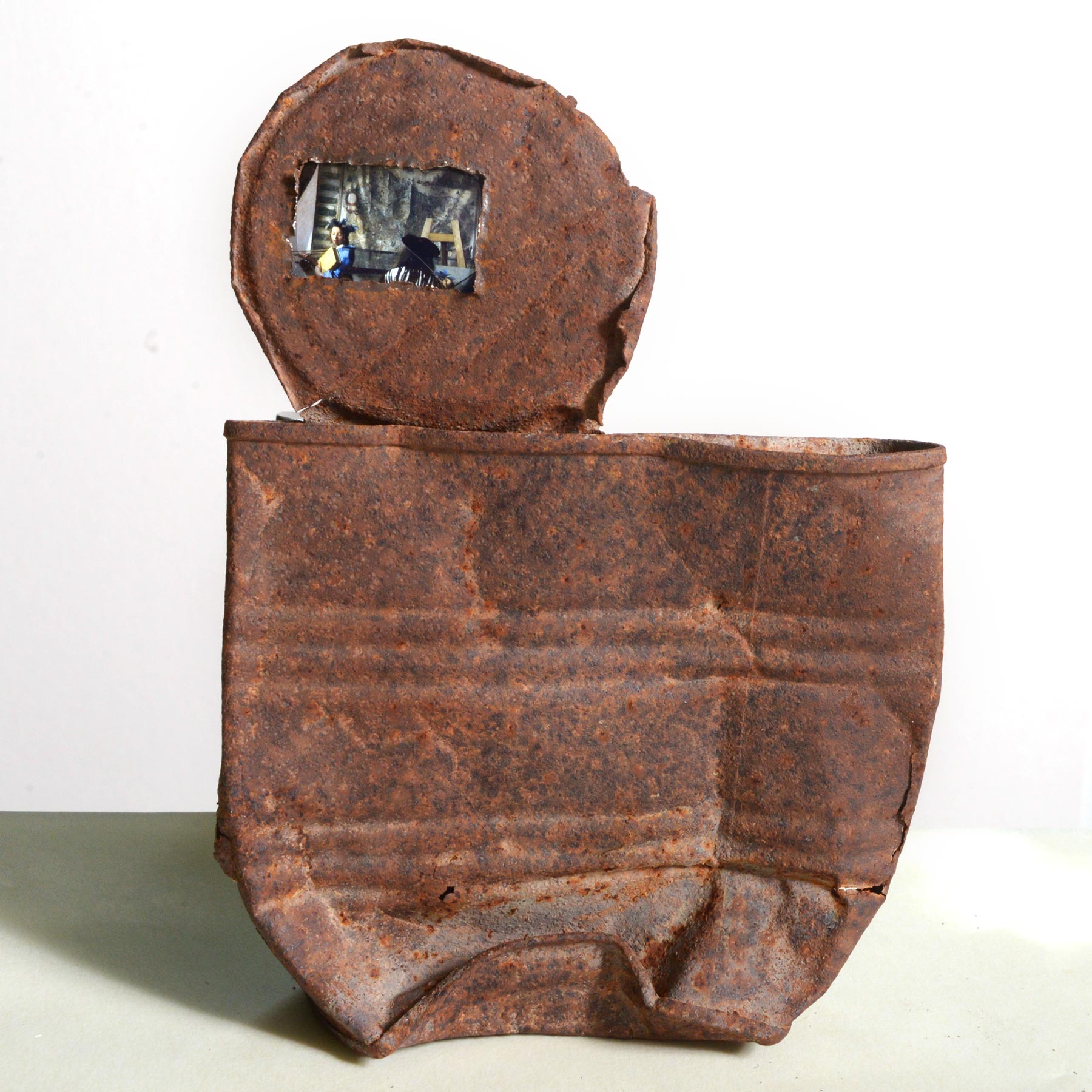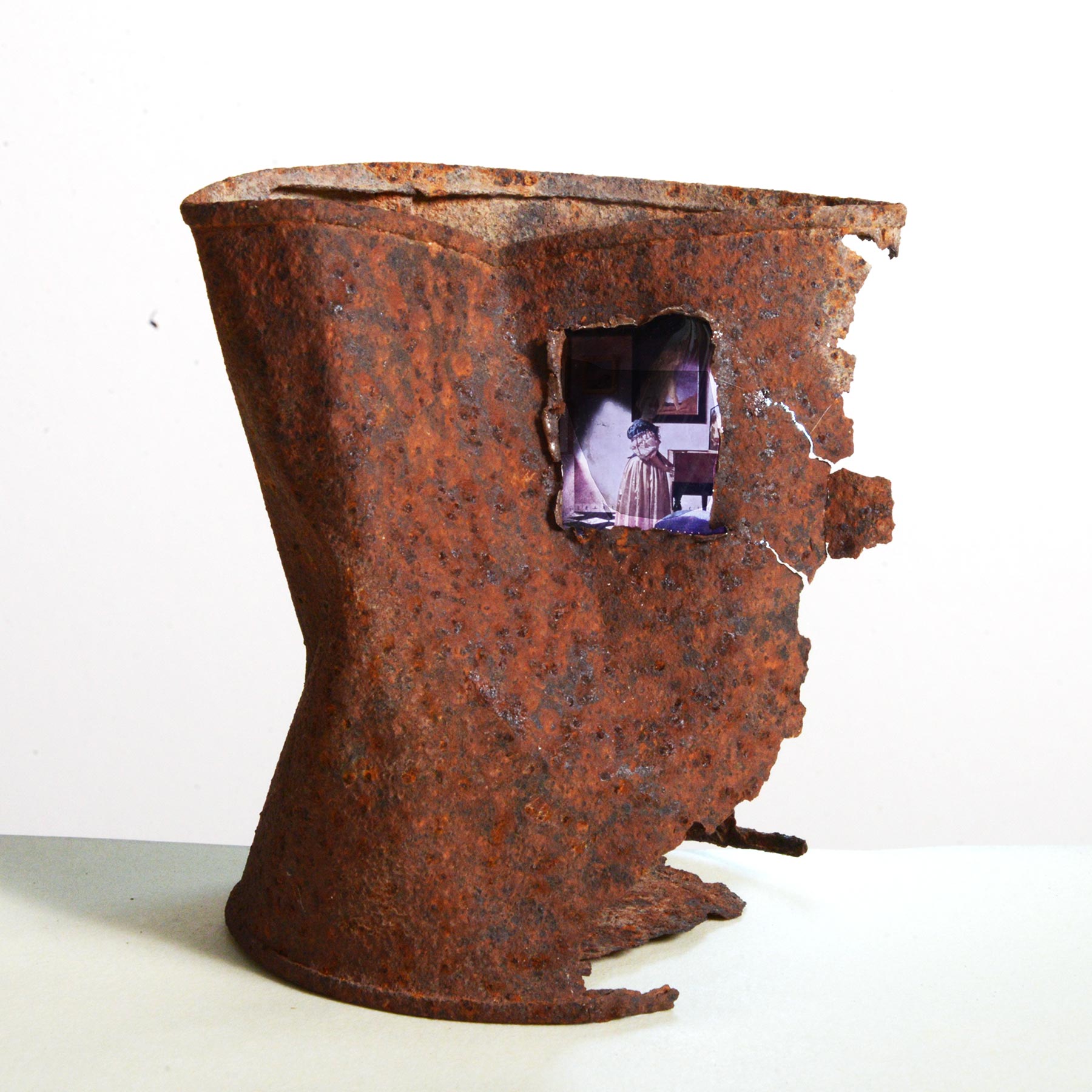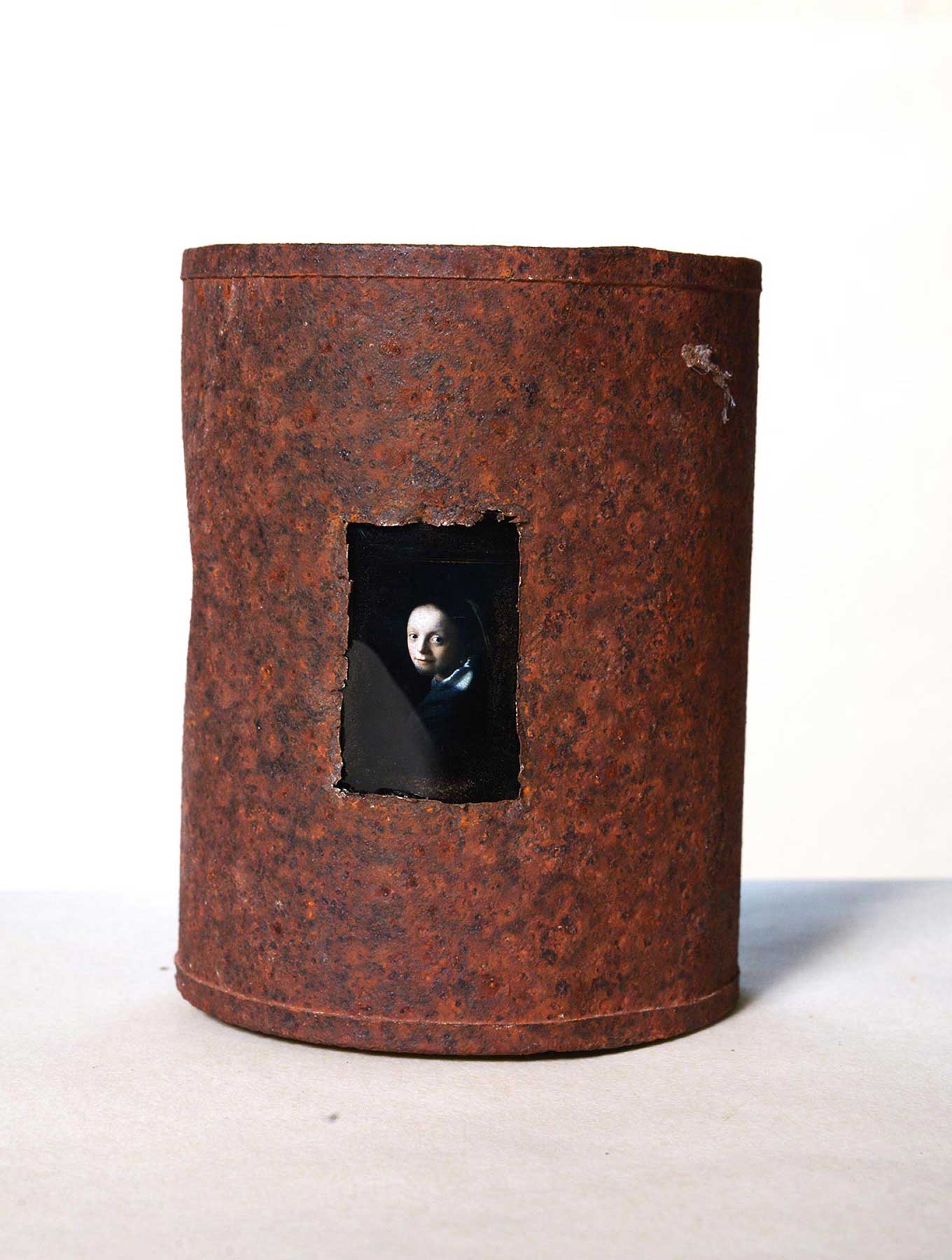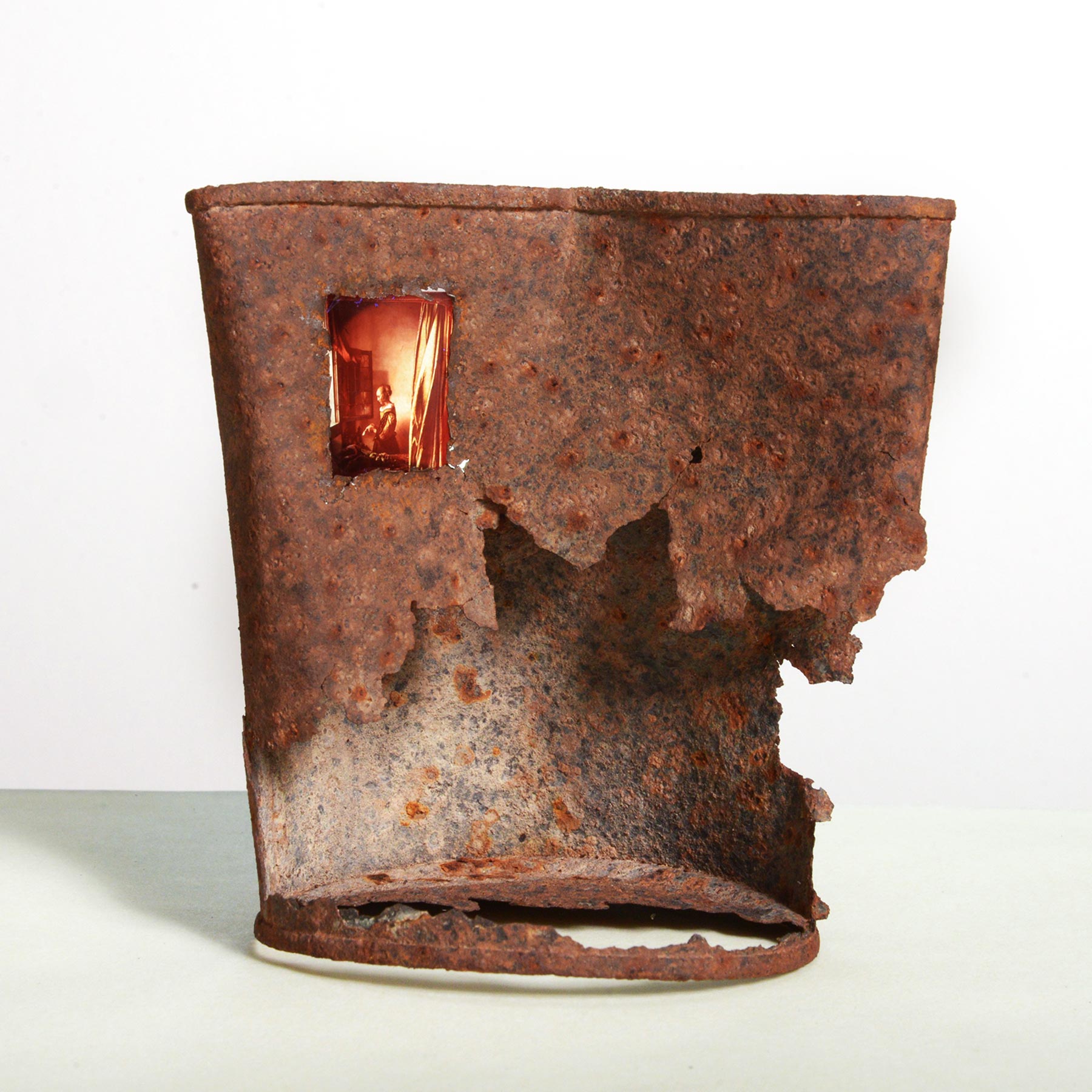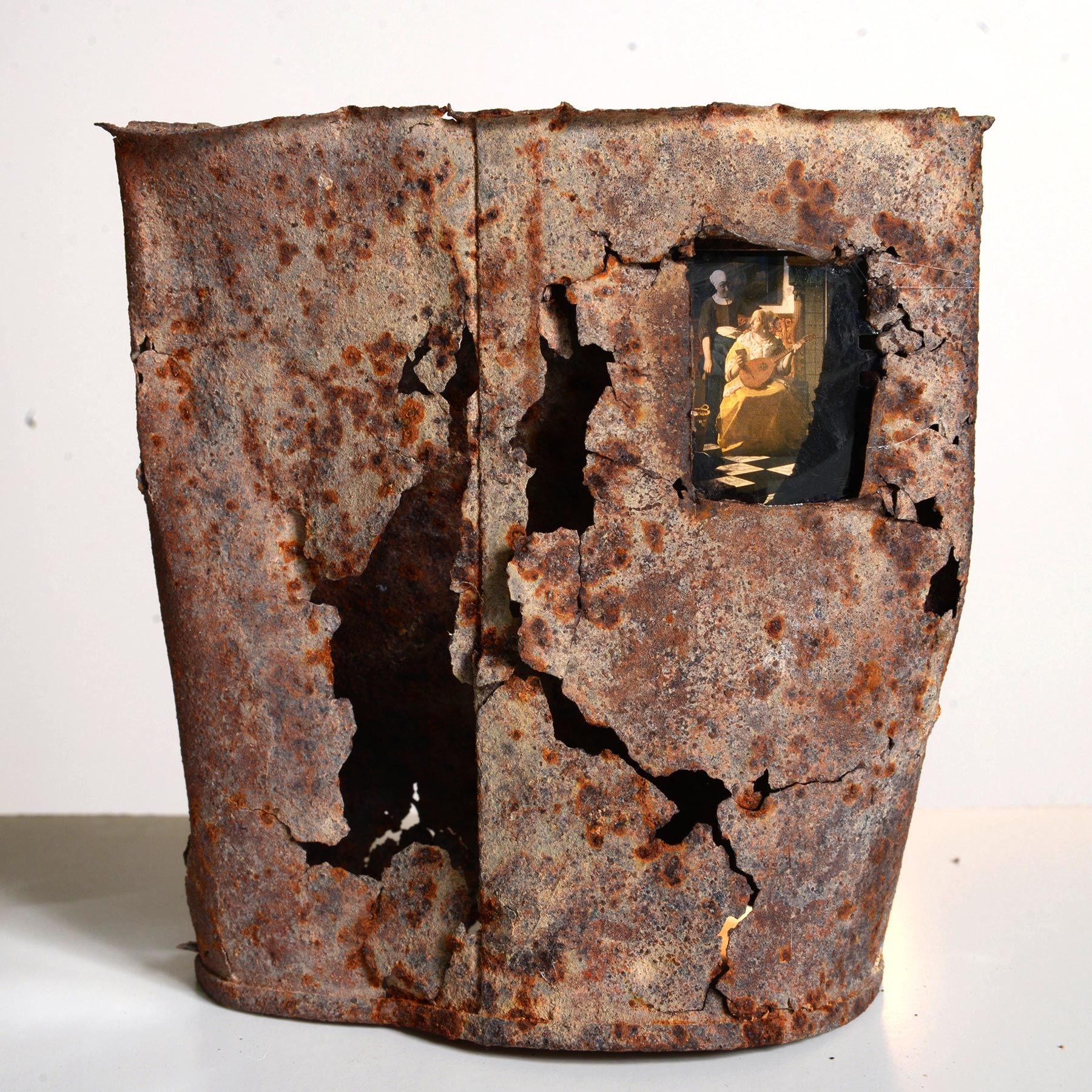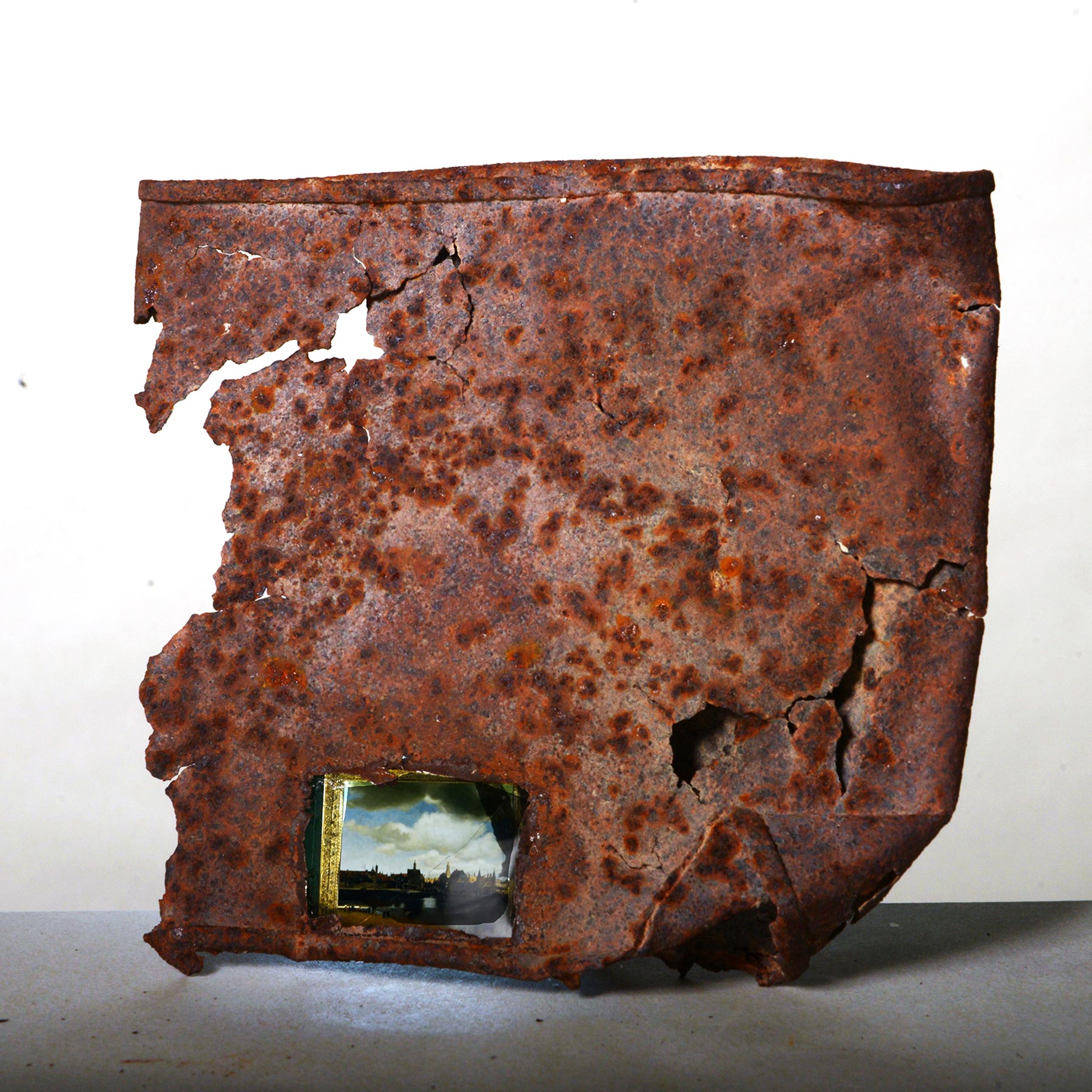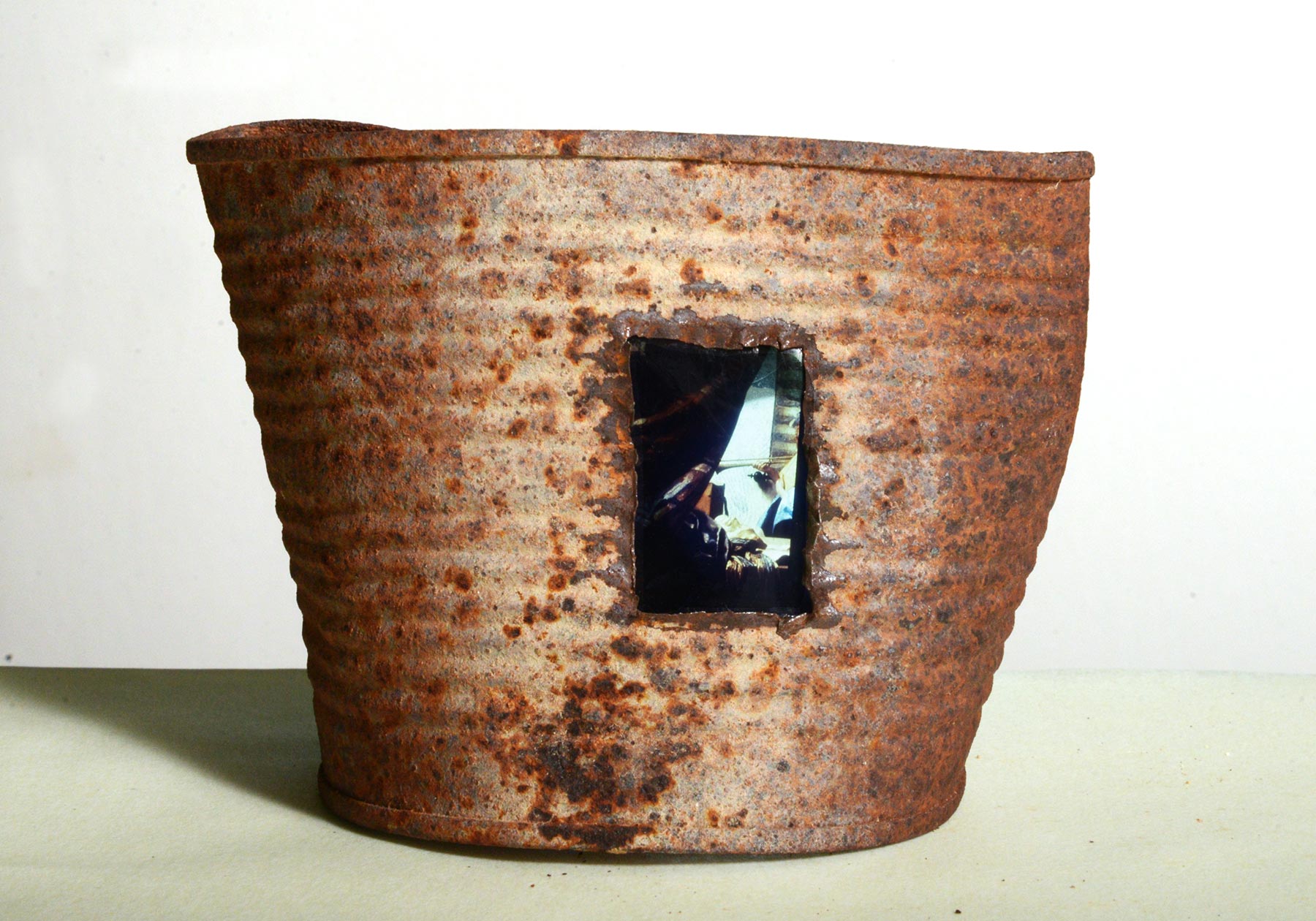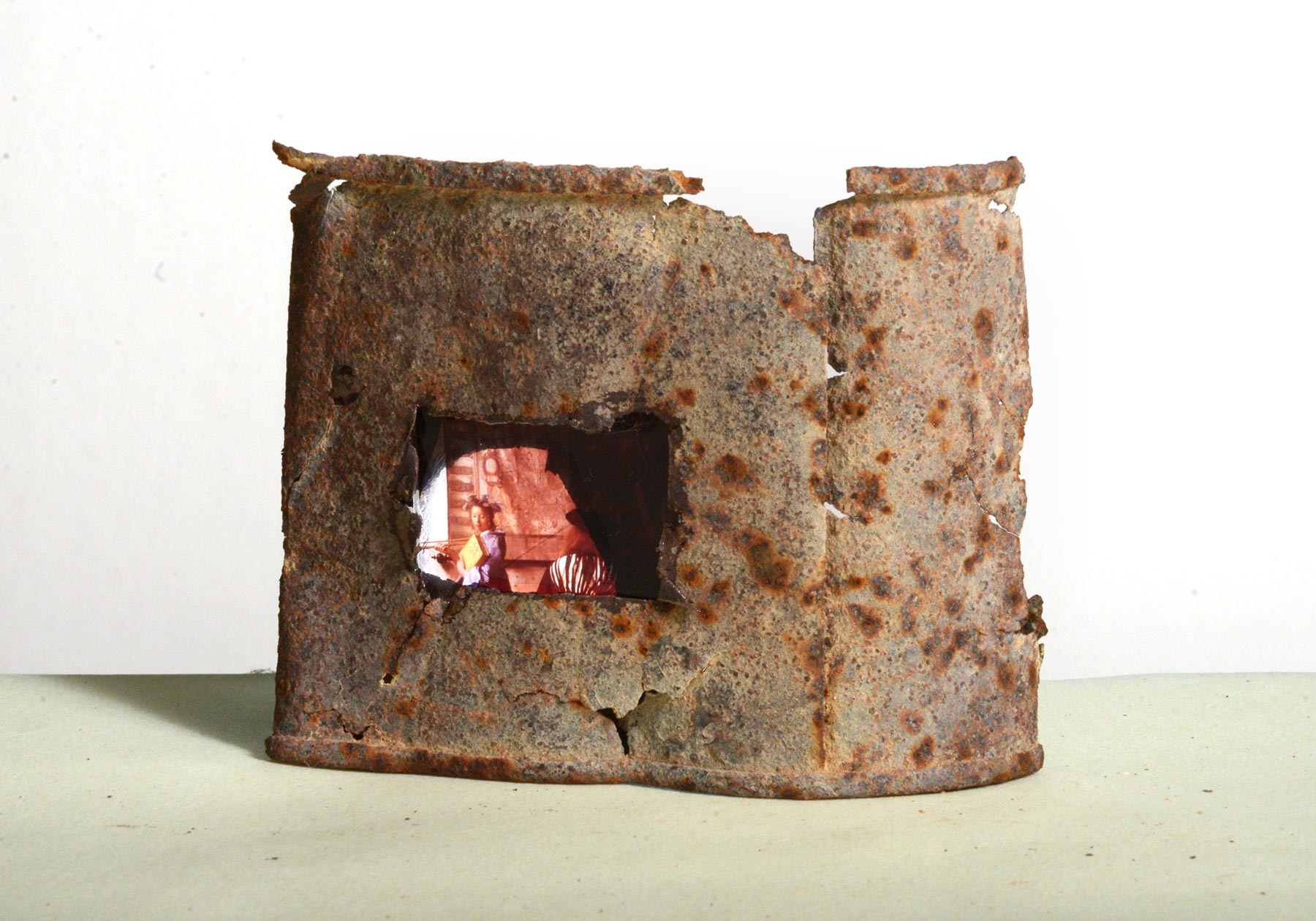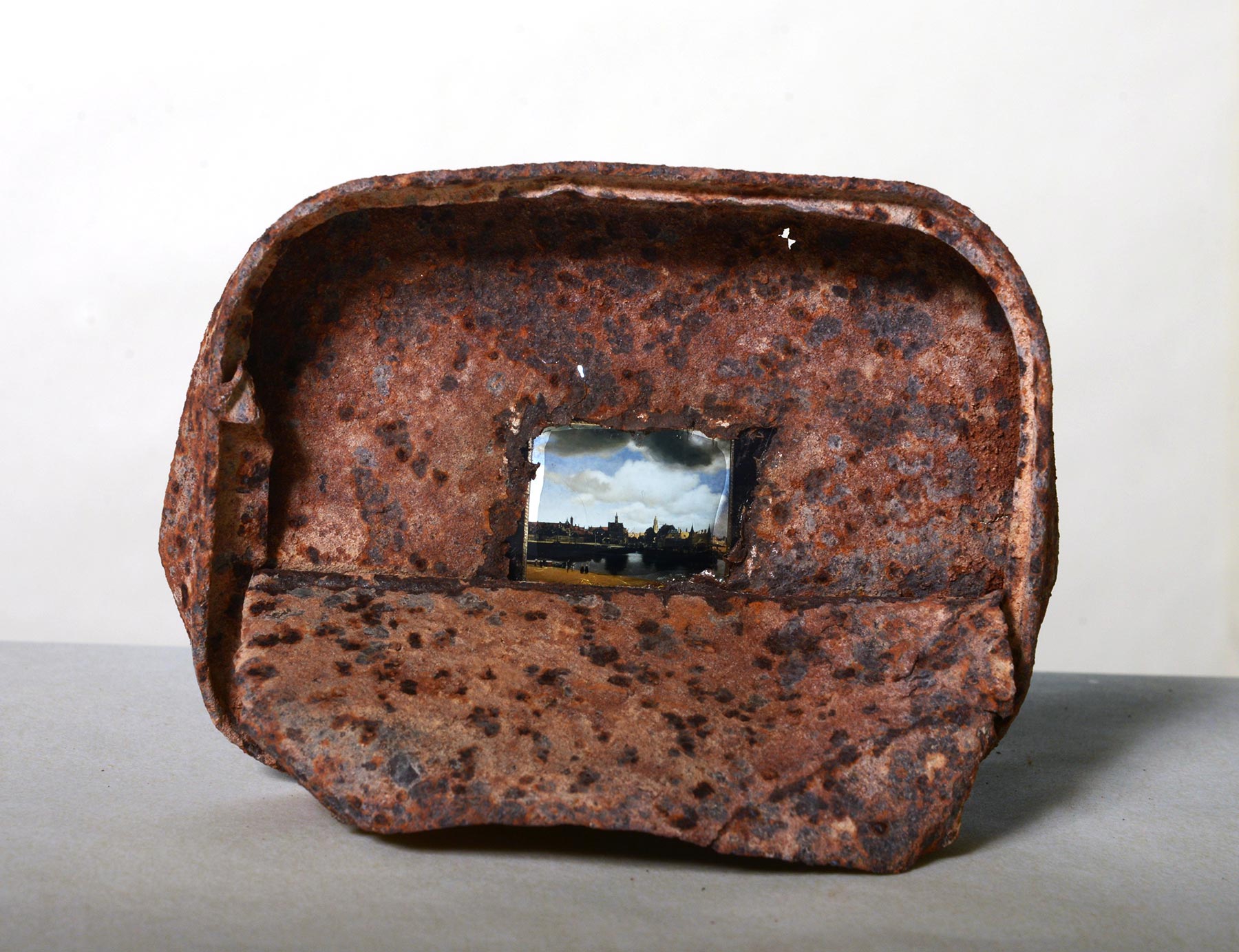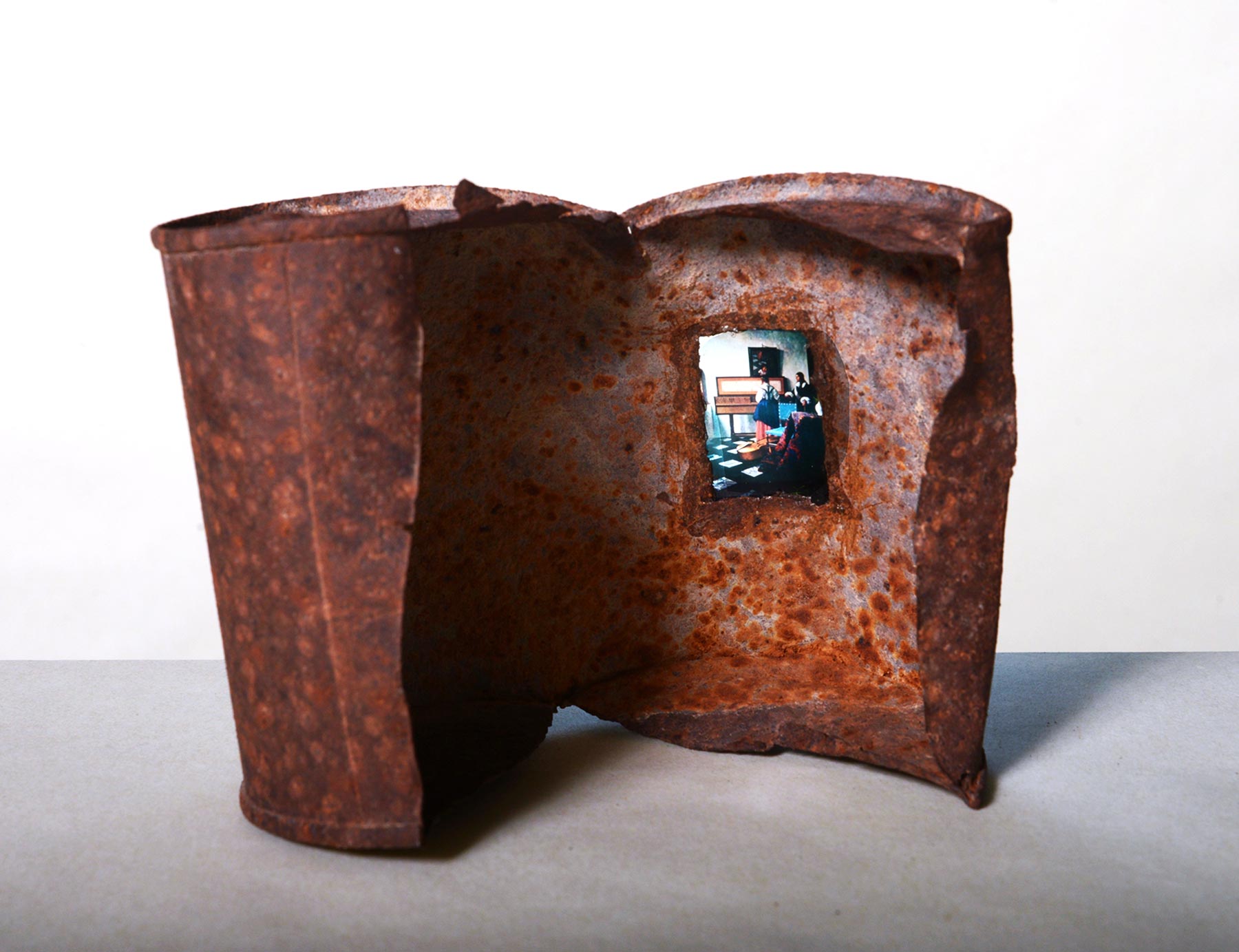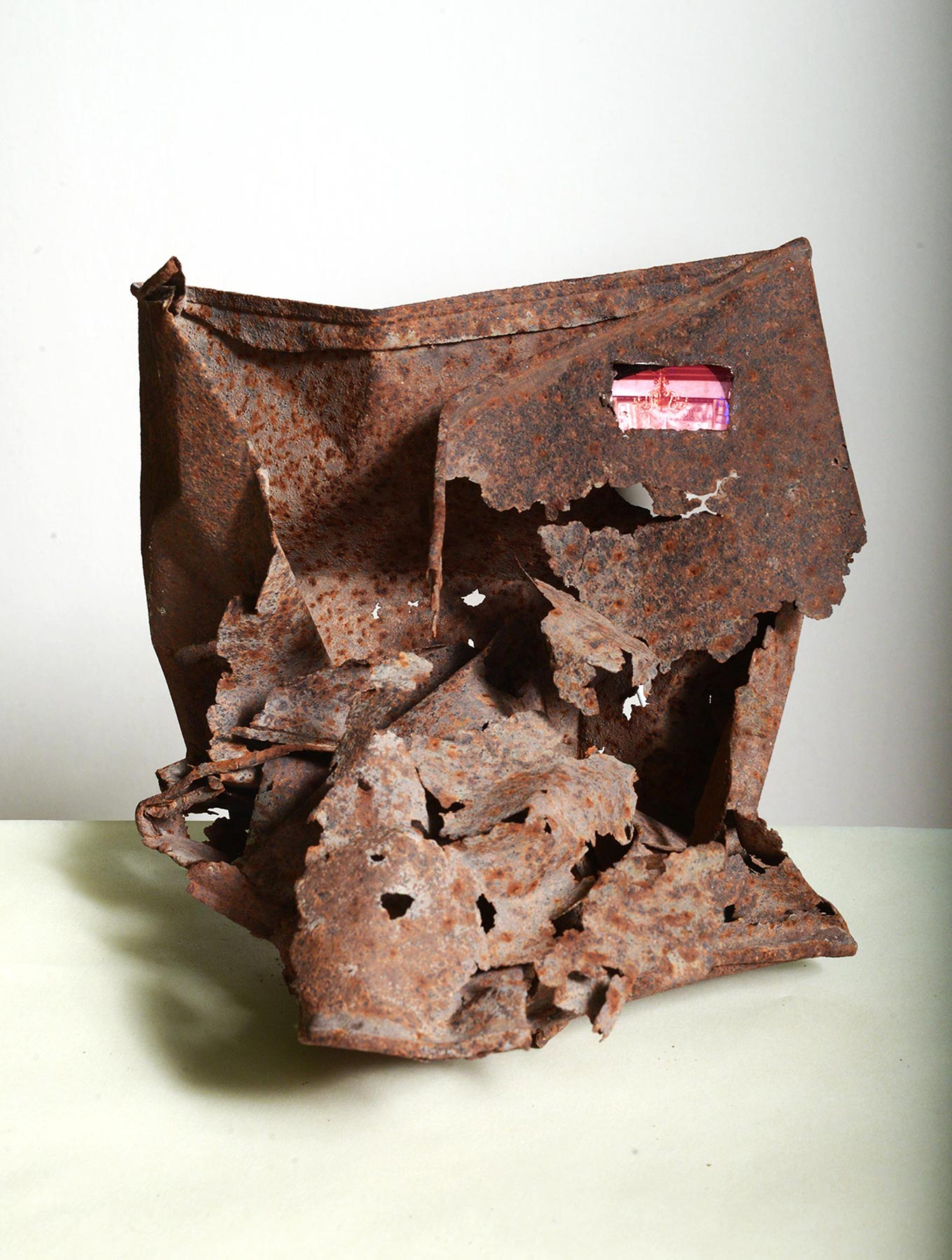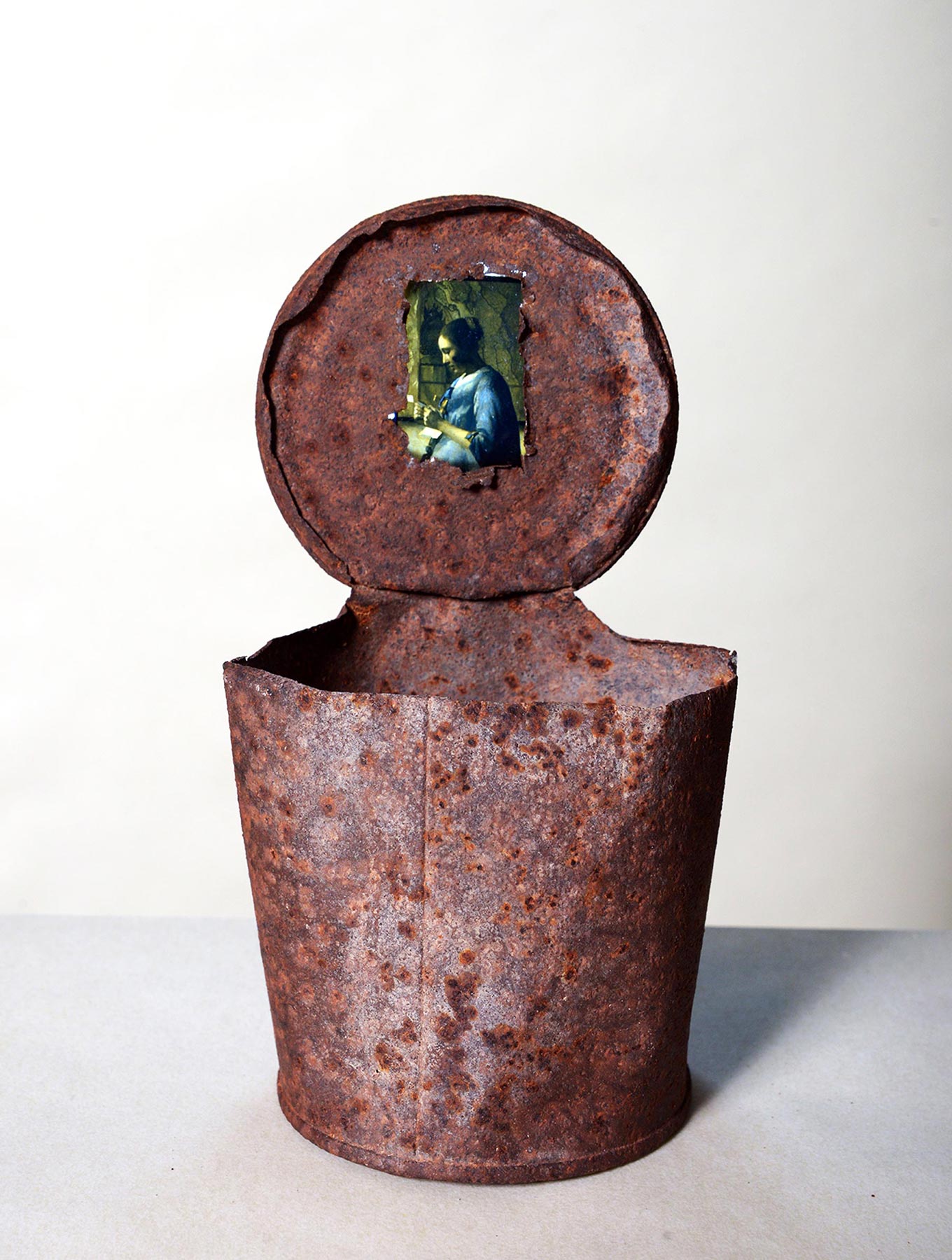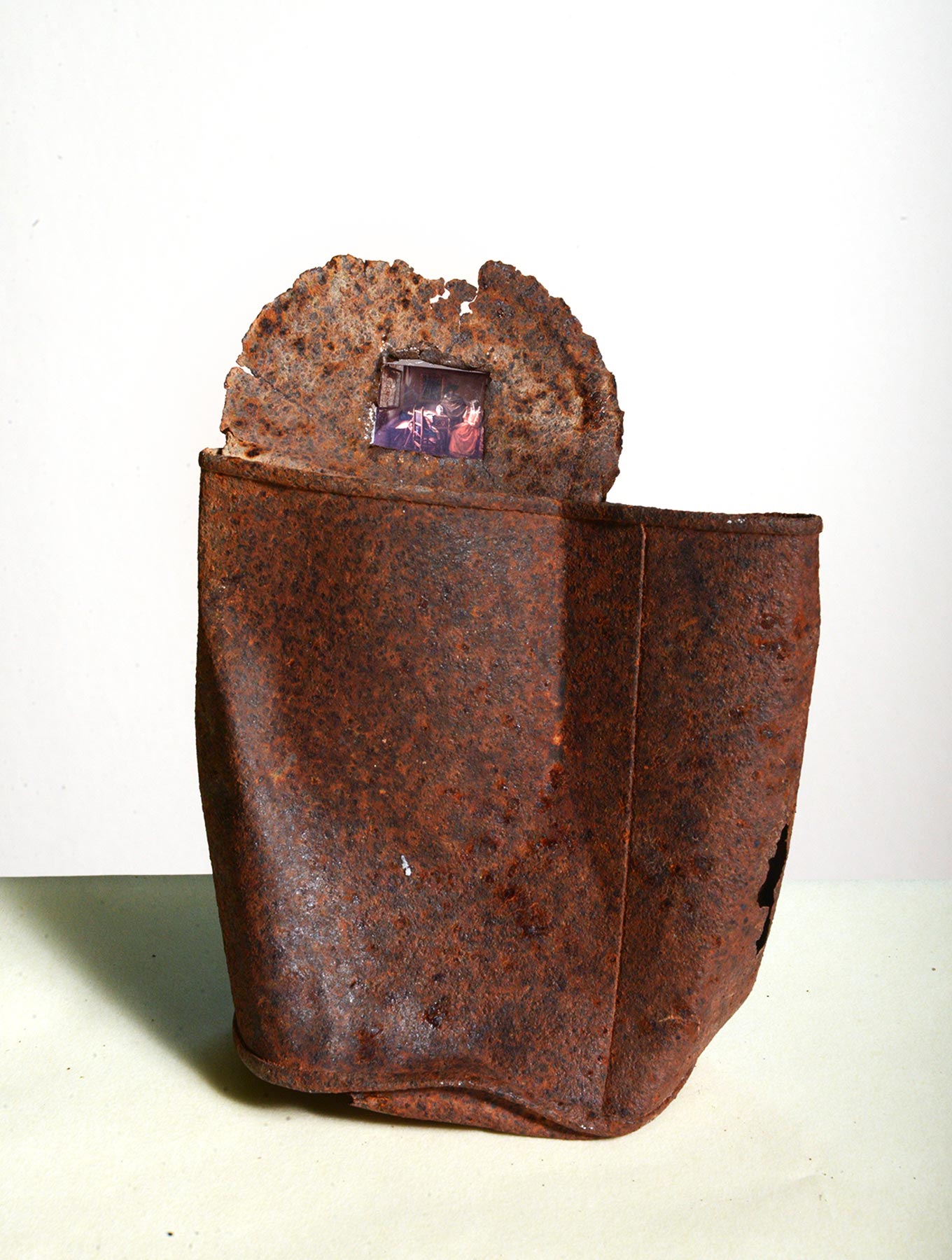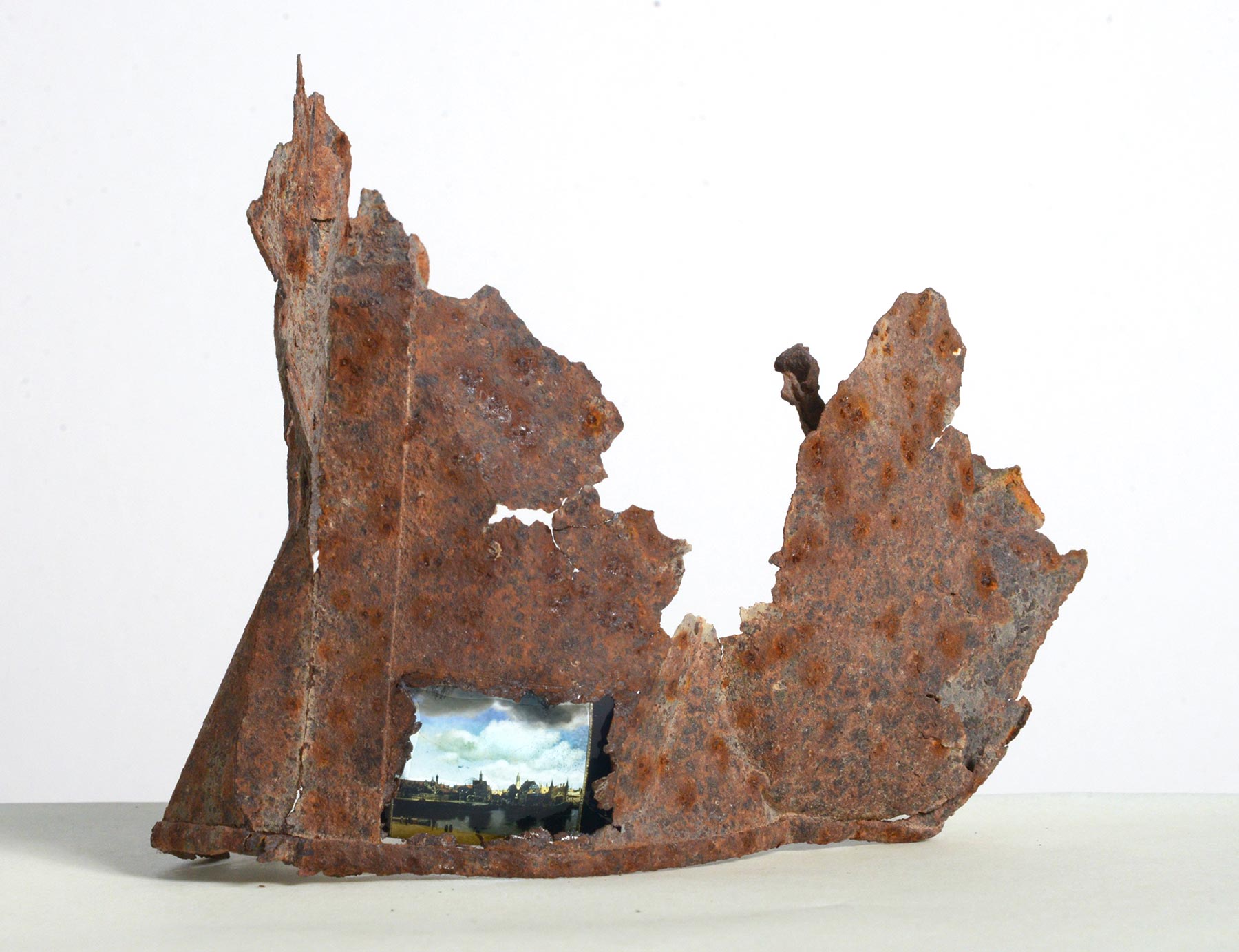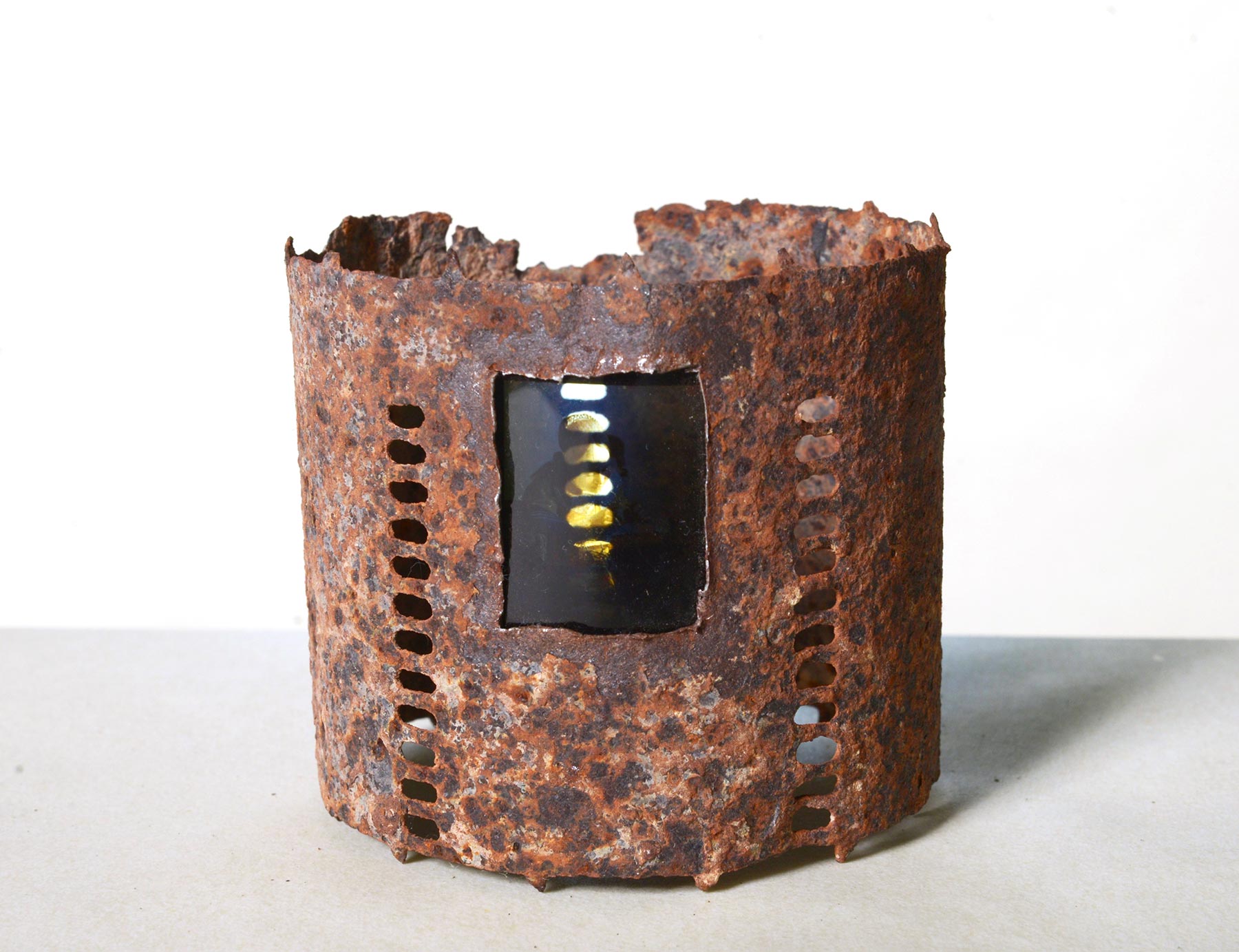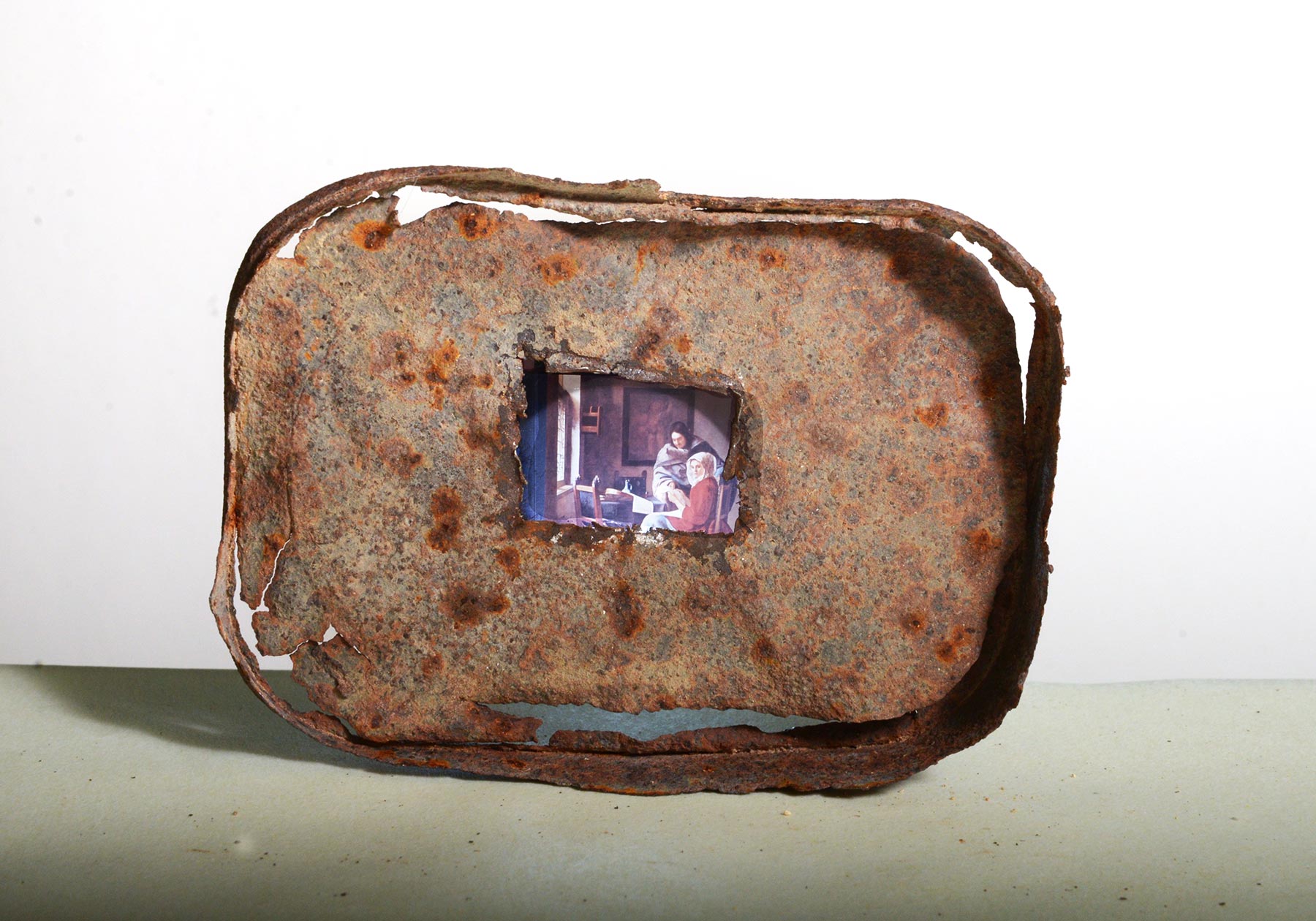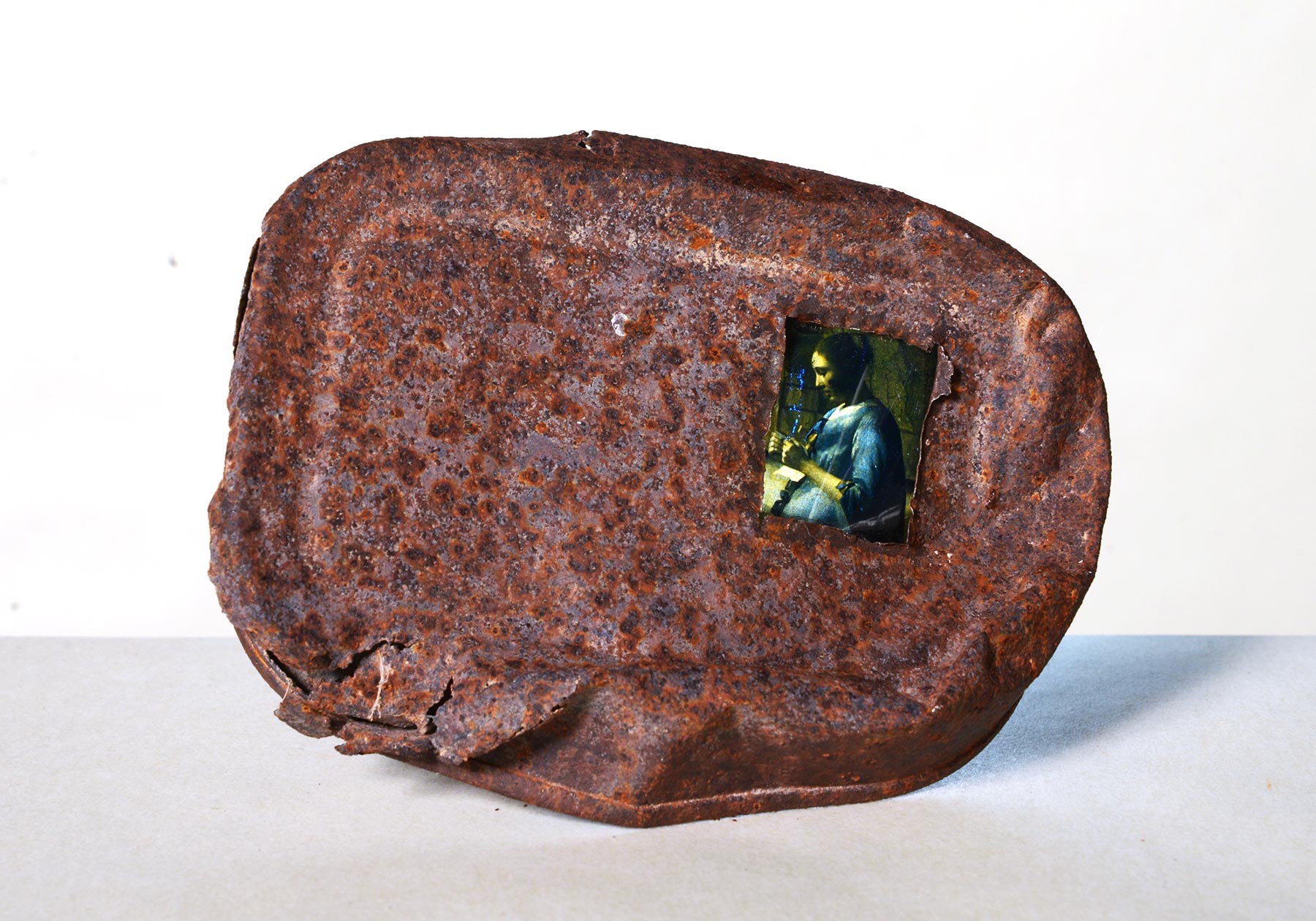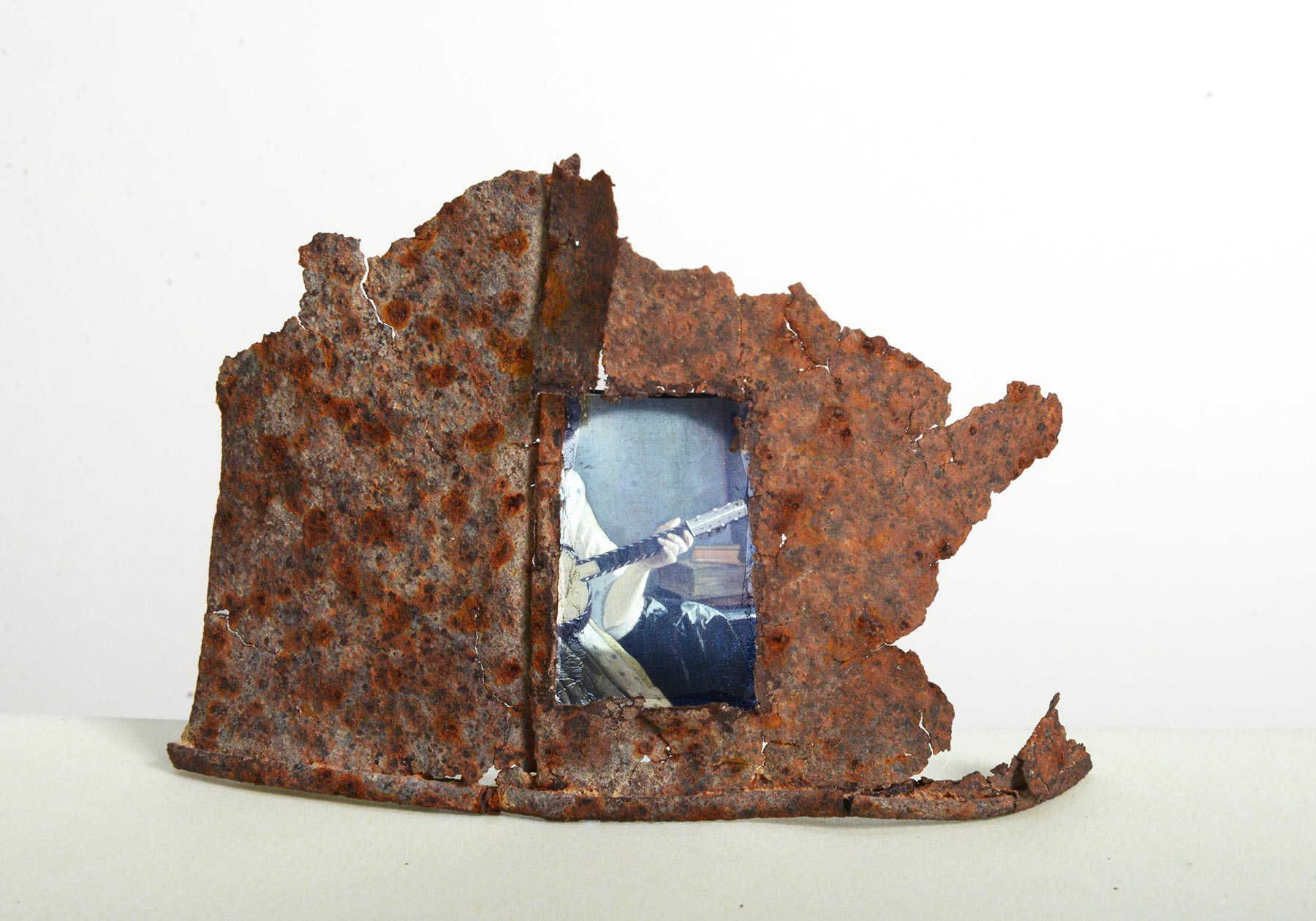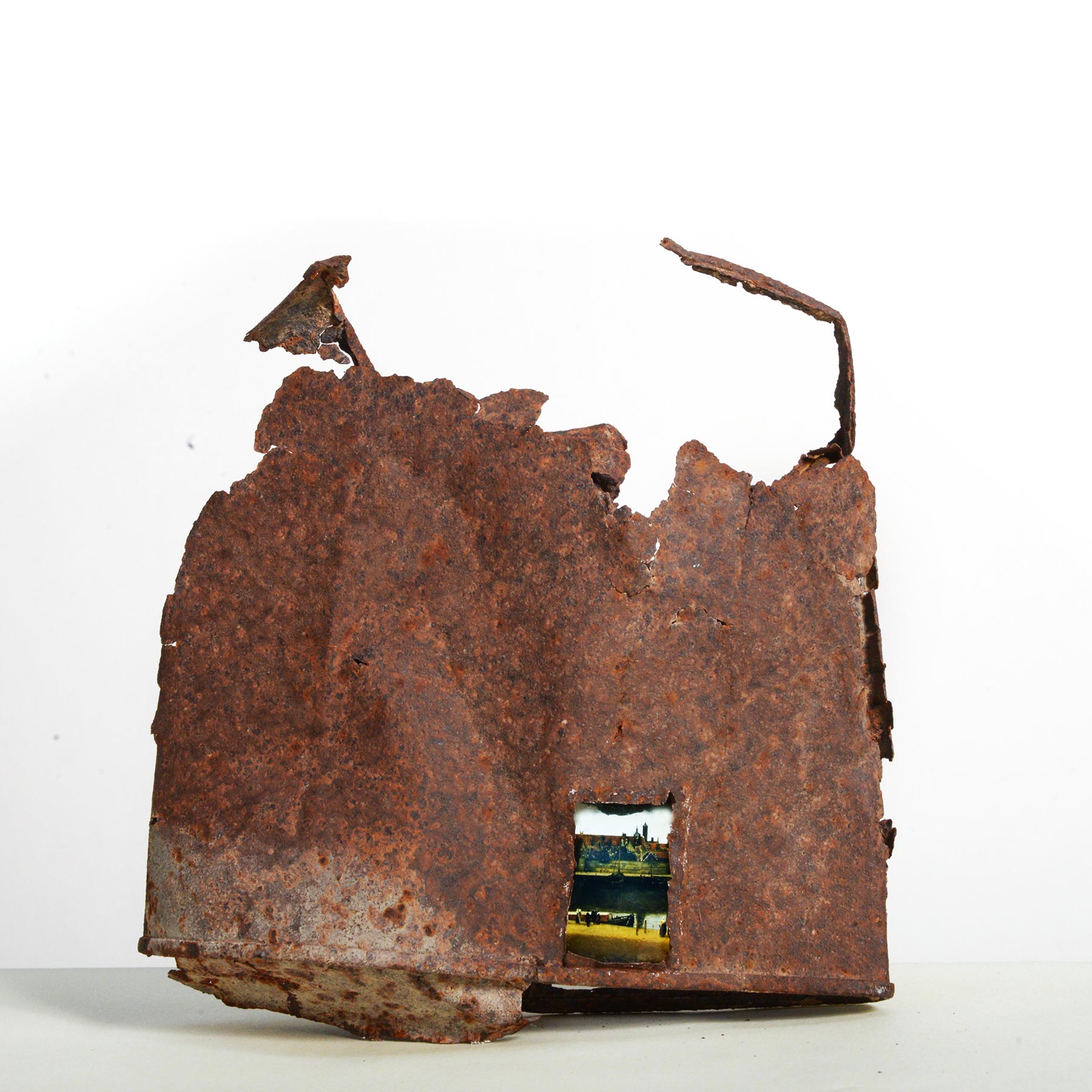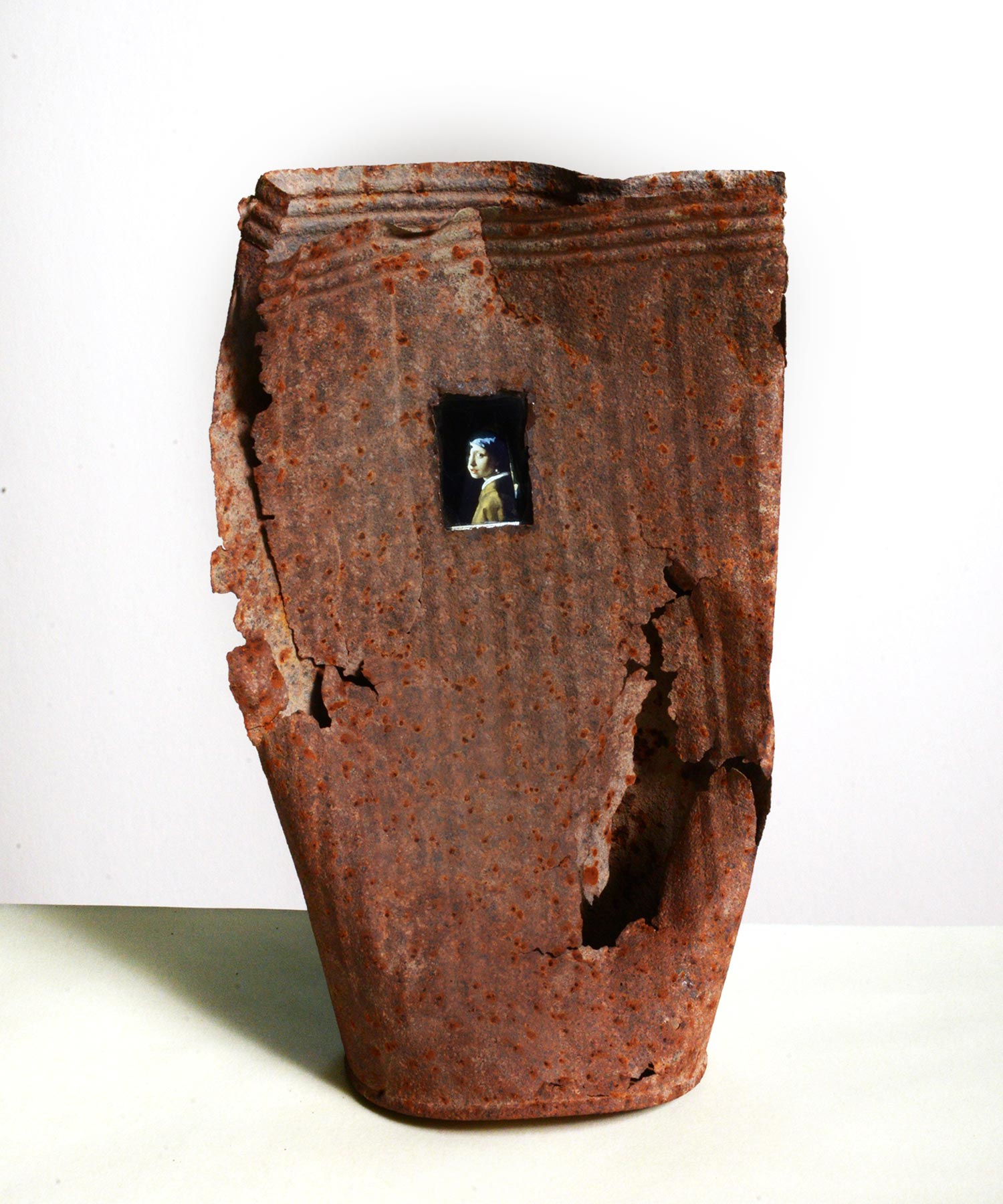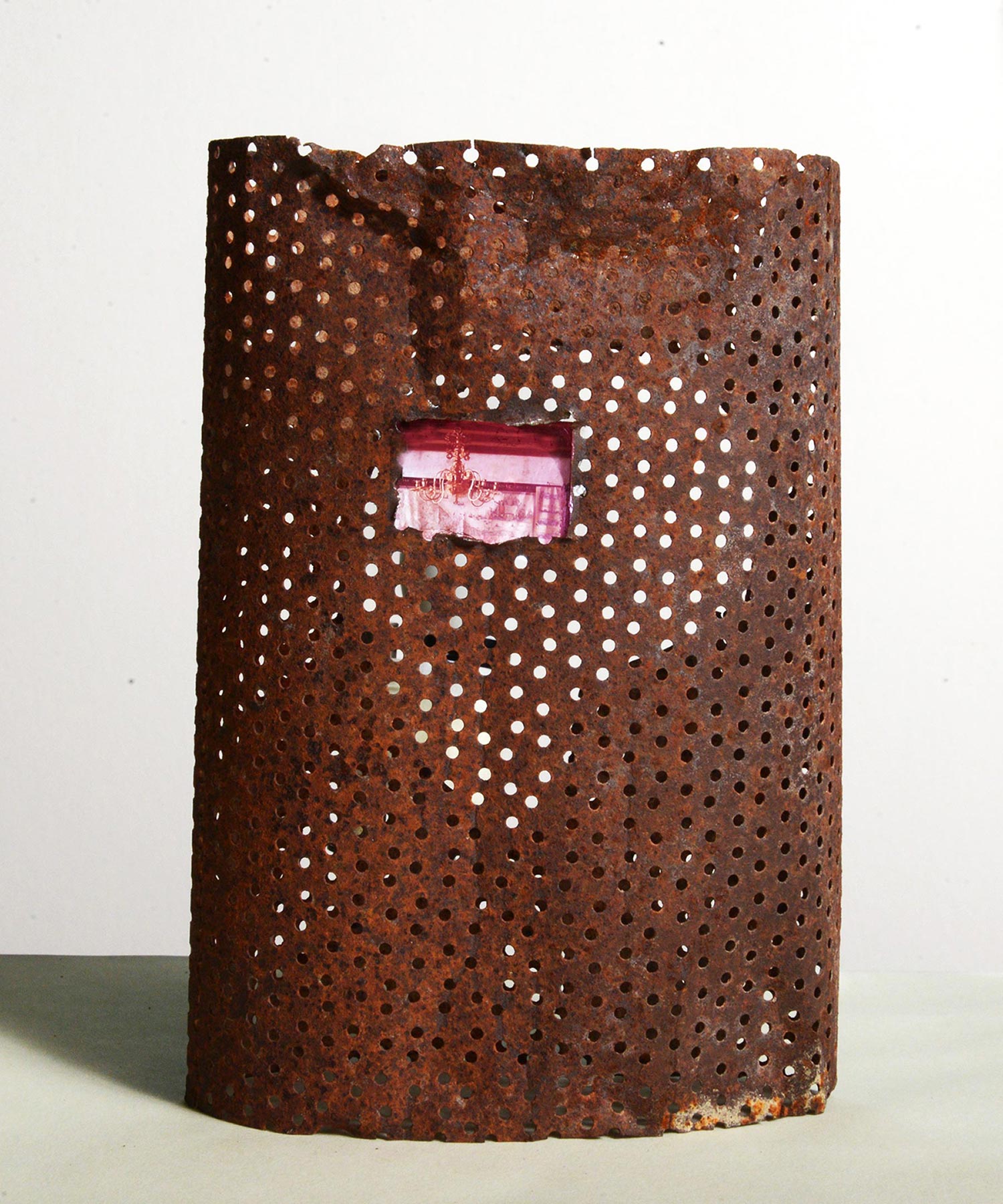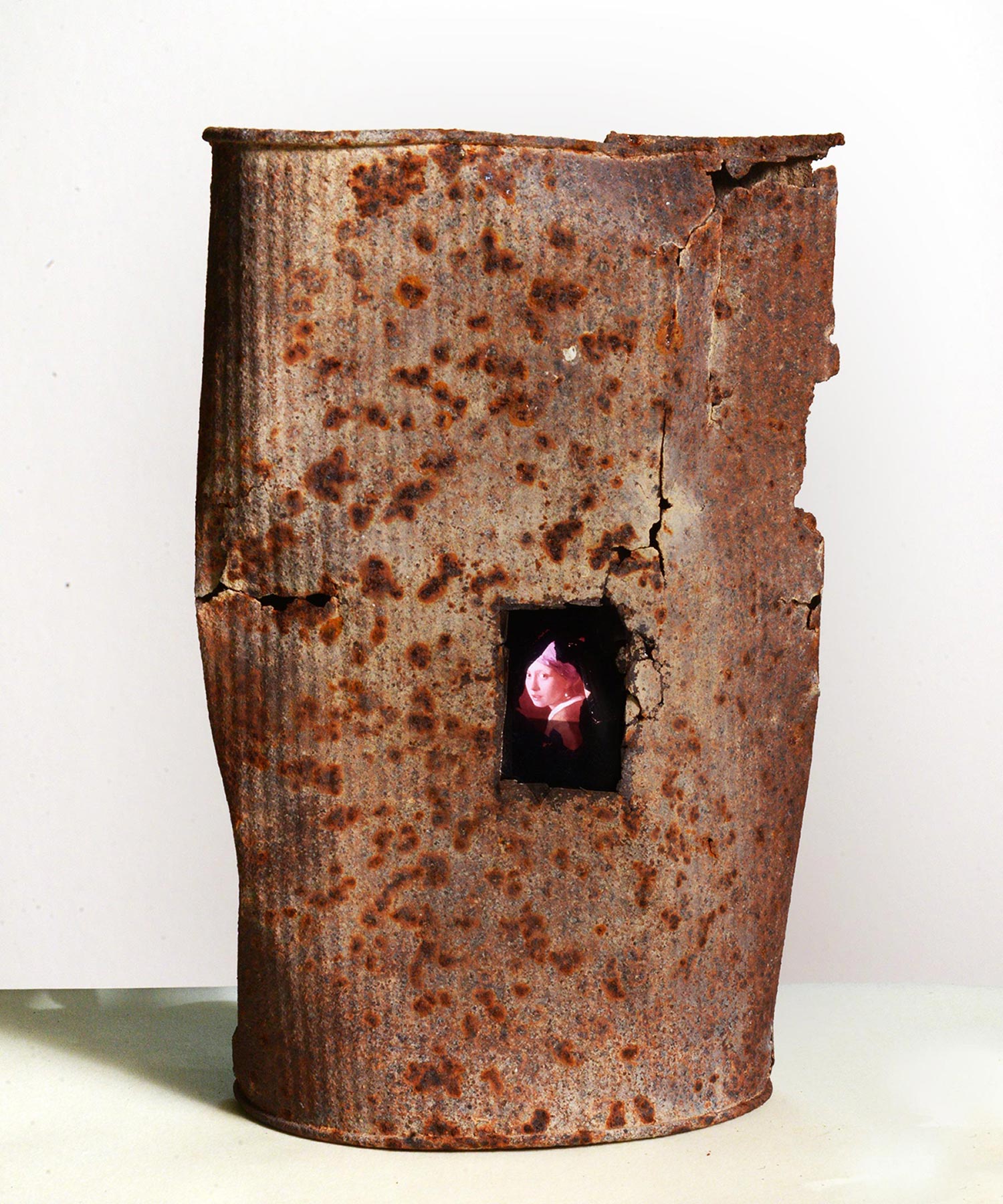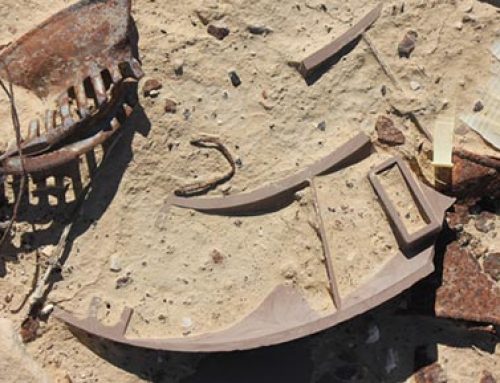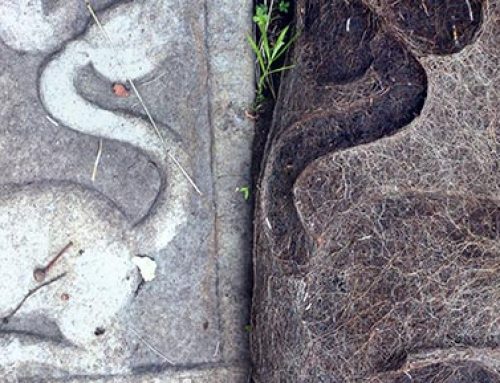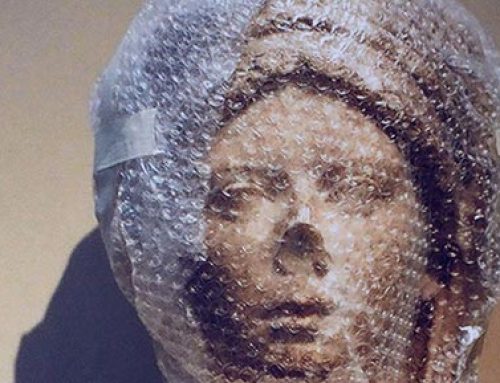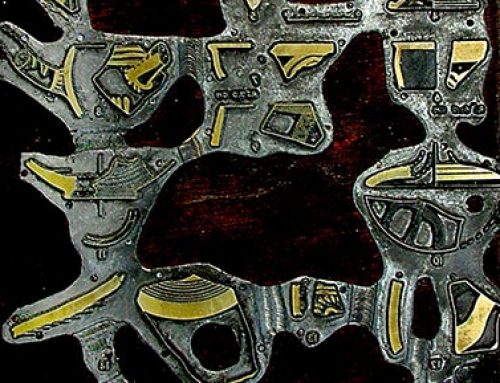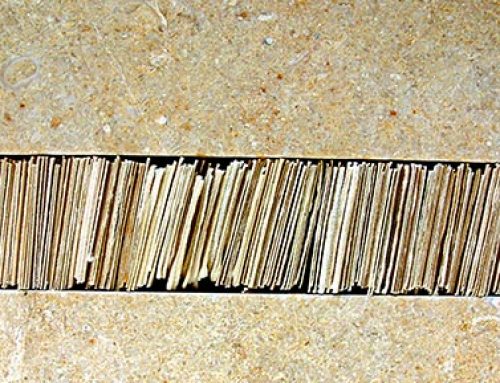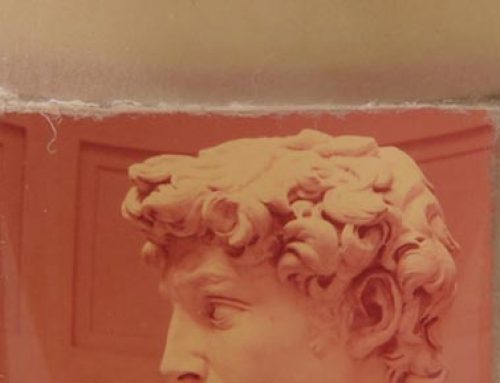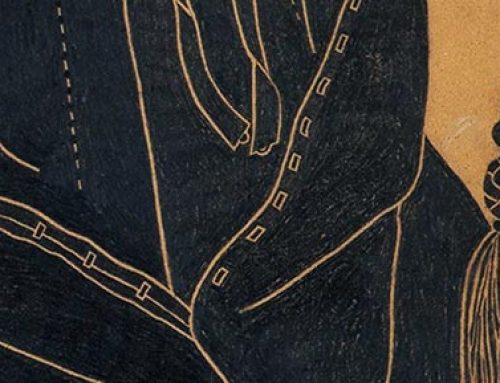Project Description
Cans
2014-2016, Can and slides
This group of cans was collected a waste heap near Mitzpeh Ramon, a process which I documented in the series : “The As-Yet Unswept Desert”. The rusty cans were clustered in a way reminiscent of refuse from an annual school outing or military exercise, their presence connected to a space characterizing the local triangle of desert-home-military. In my studio, I created the tie between the cans, a discarded slide archive, and the work of the artist Johannes Vermeer. The cans’ rust and simplicity met the daily life of 17th-century Delft, reflecting the artist Meir Agassi’s description of Vermeer as “the Houdini of pressured reality, of domestic crowding and noise”. The closed cans seemed to me dark chambers meeting Vermeer’s staged rooms, his hermetic and puzzling world in its detail. The spaces within the emptied and disintegrating cans encounter the domestic spaces of Vermeer, furnished and stylized, vulnerabilities encountering each other and, most saliently, light returns to center stage – both in Vermeer’s drawings from Delft and in the process of deciphering the scenes in the windows cut within the cans from Mitzpeh Ramon. The rusty cans themselves may be seen as objects reflecting aesthetic and cultural values in associative local contexts such as firing-range targets or the convoys on the way to Jerusalem. The observer can range from “Want of Matter” in Israeli art to the principle of beauty of Japanese culture, its “sabi” described by Yaacov Raz as “the quality of something that has aged, isolation, the erosion of time, in which life-stories are evident and in which something is still happening: rust, the patina of copper, the quality of rustiness” (Yaacov Raz, 2006, translated from Hebrew).
